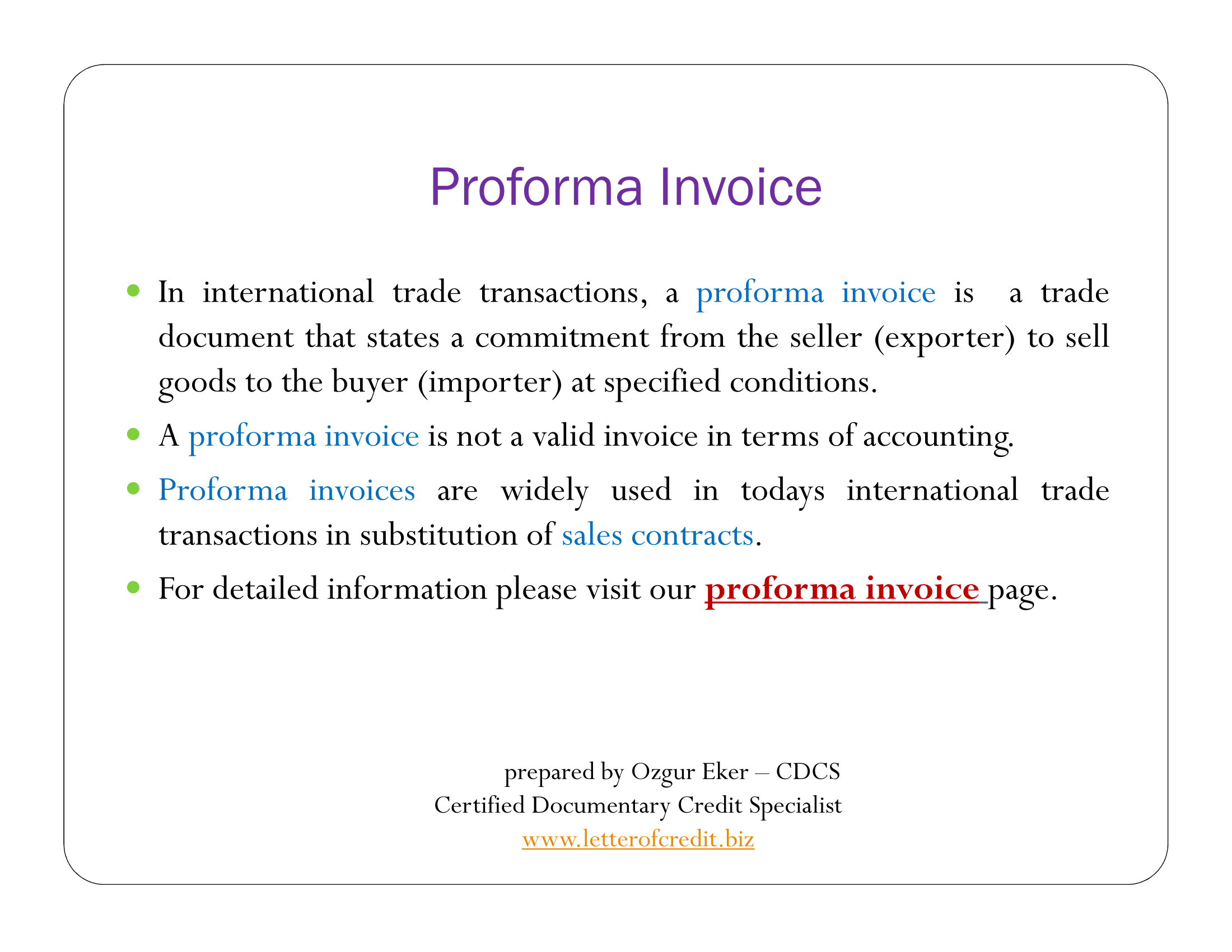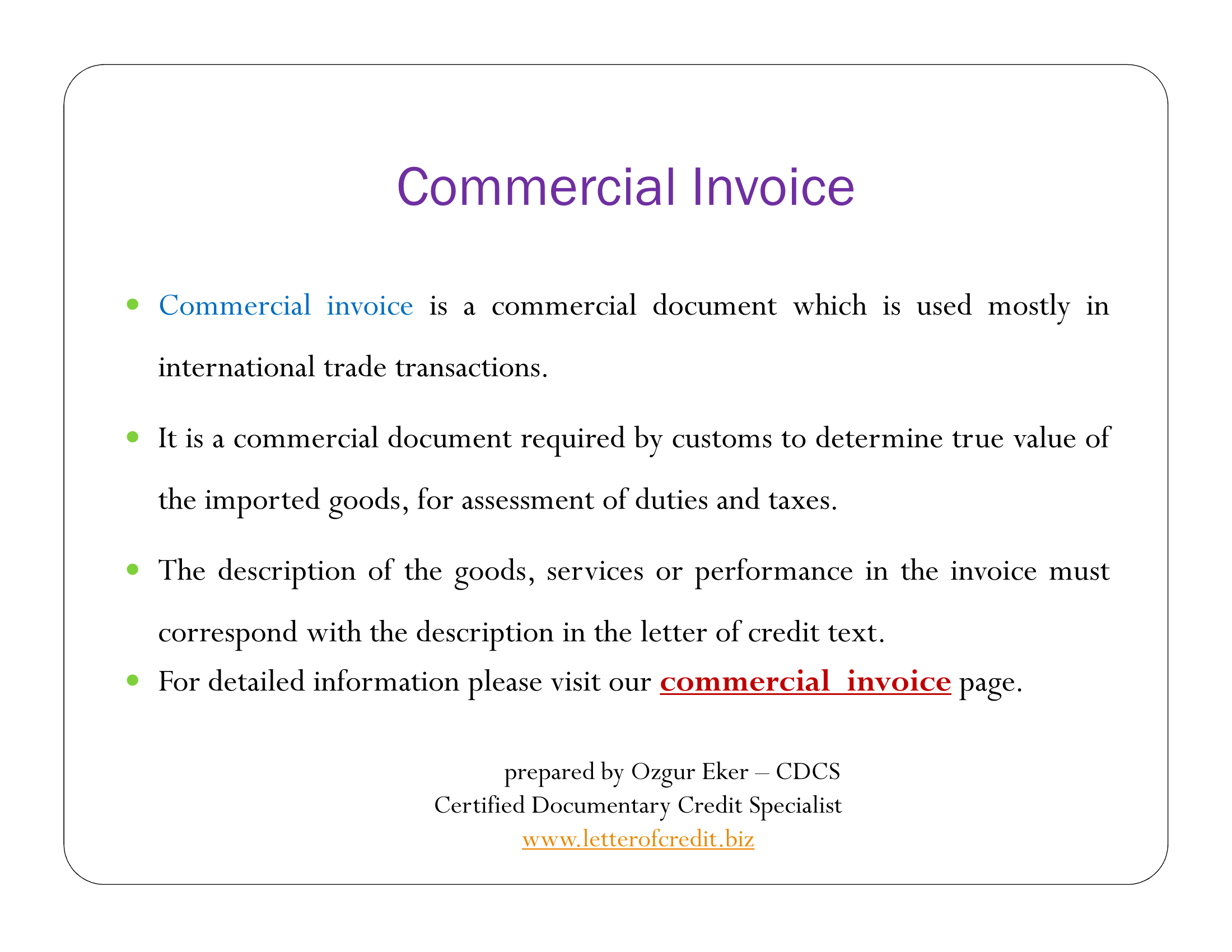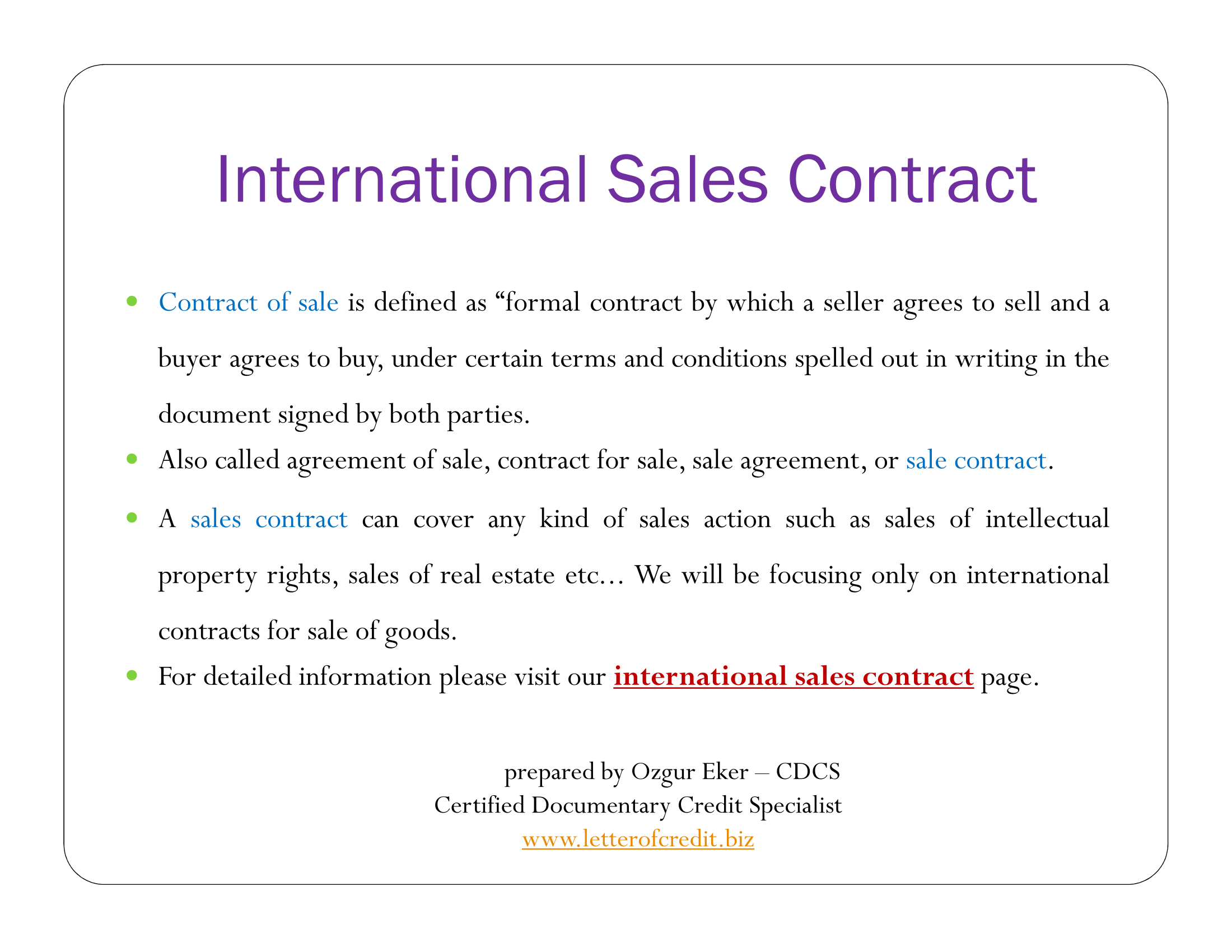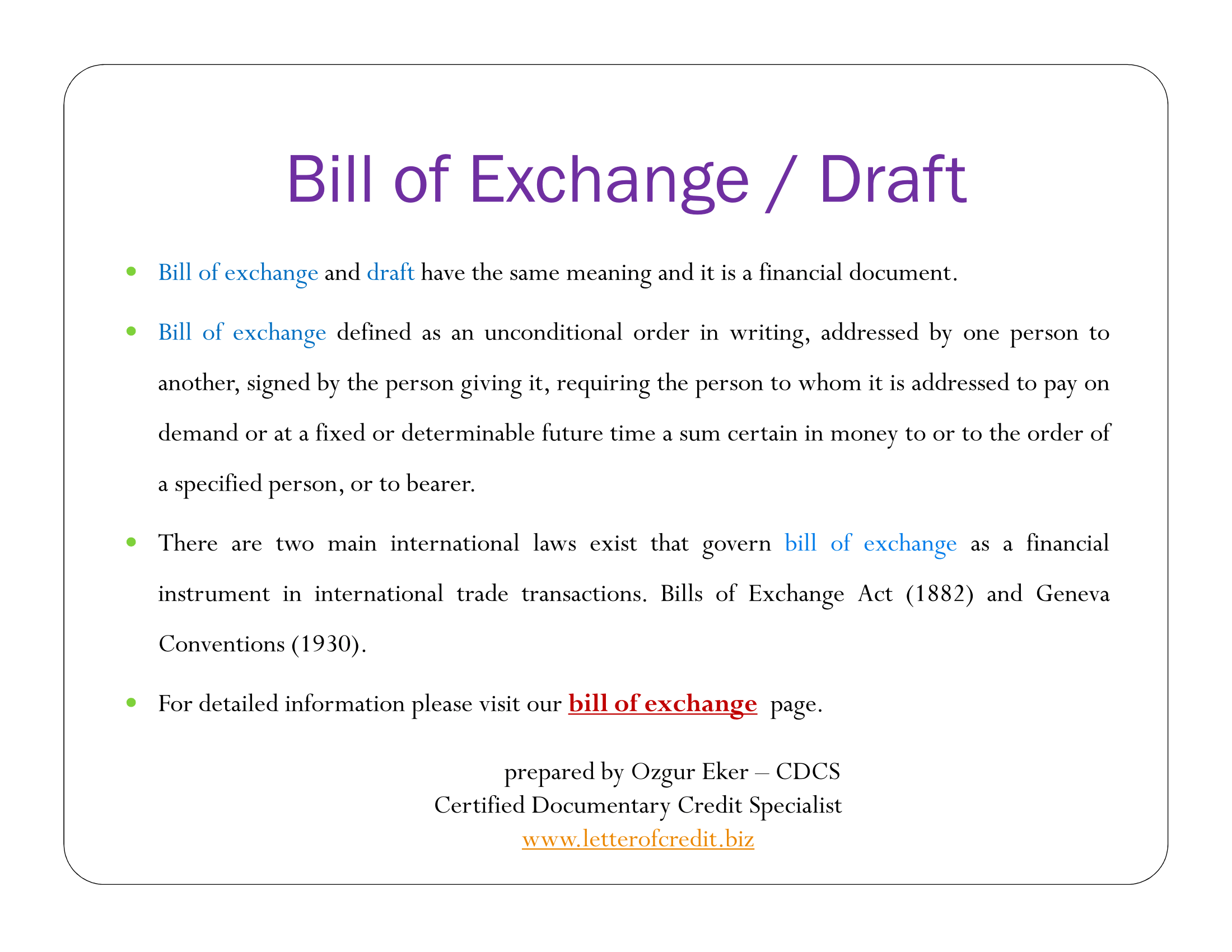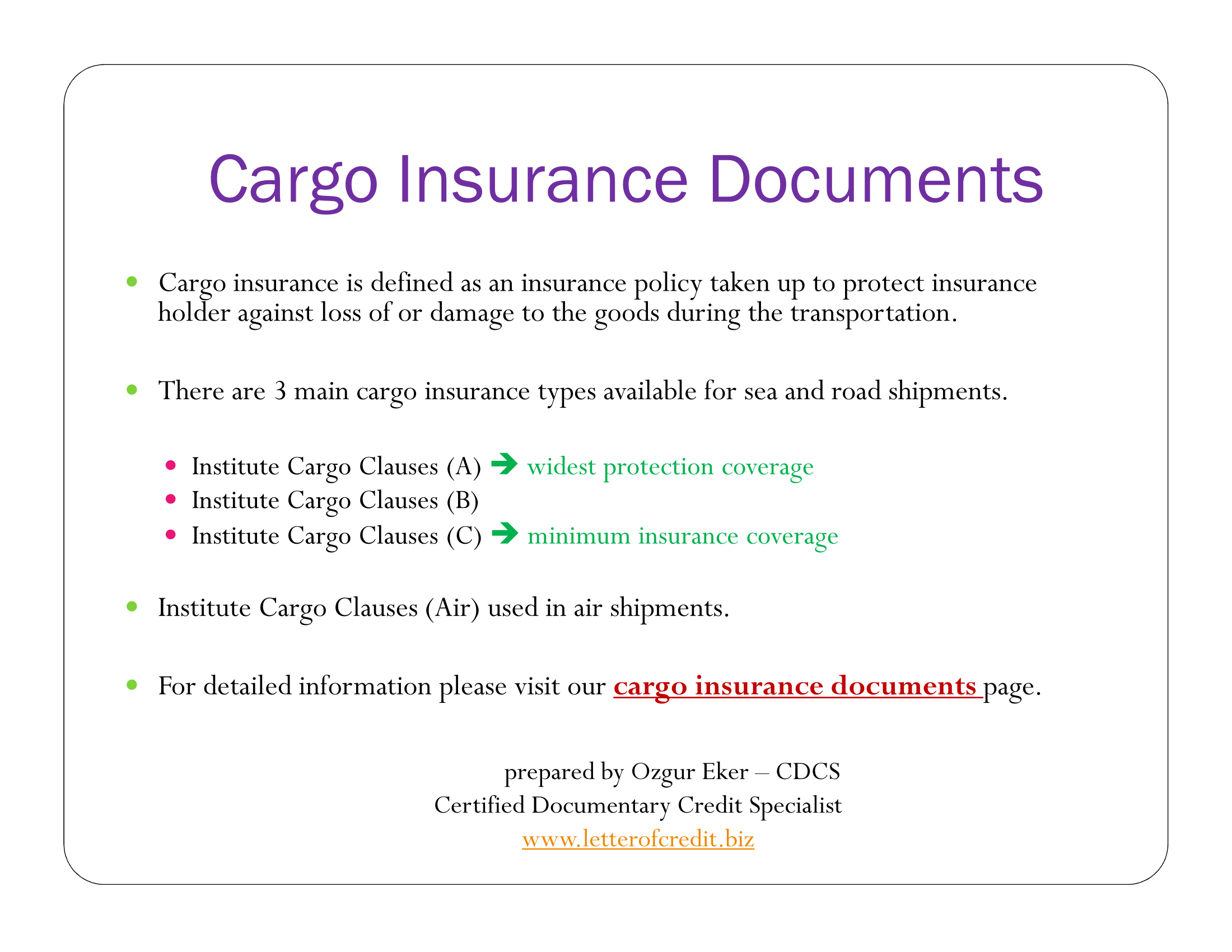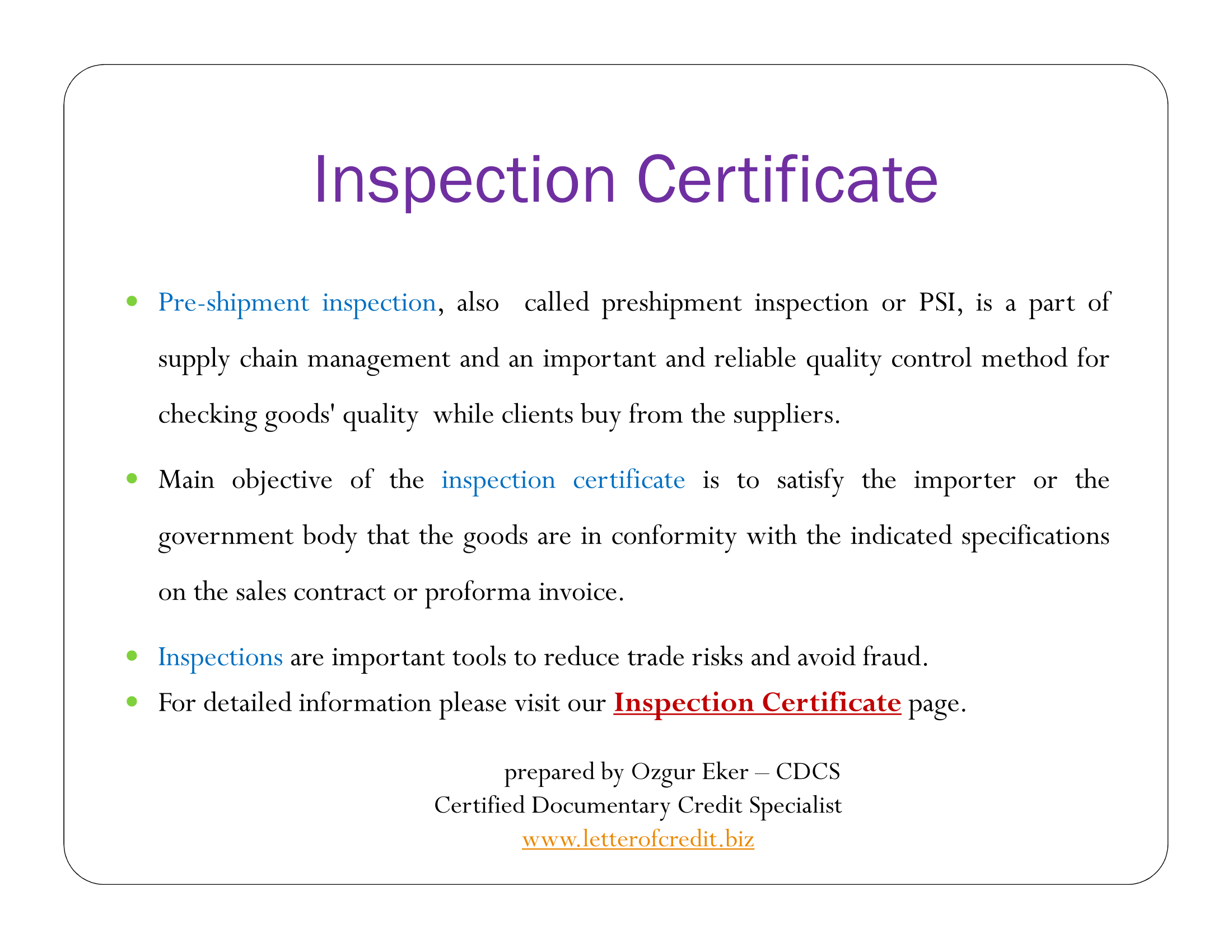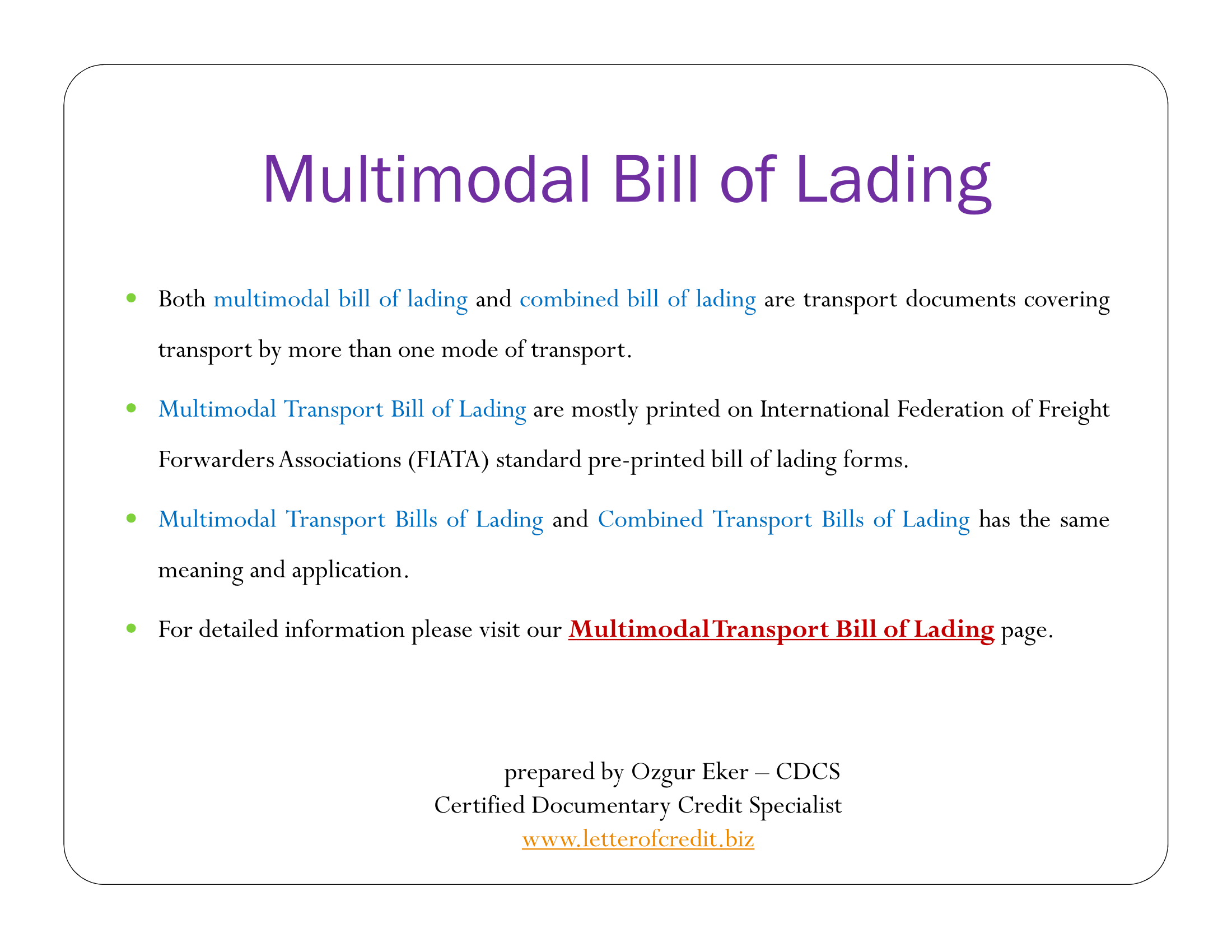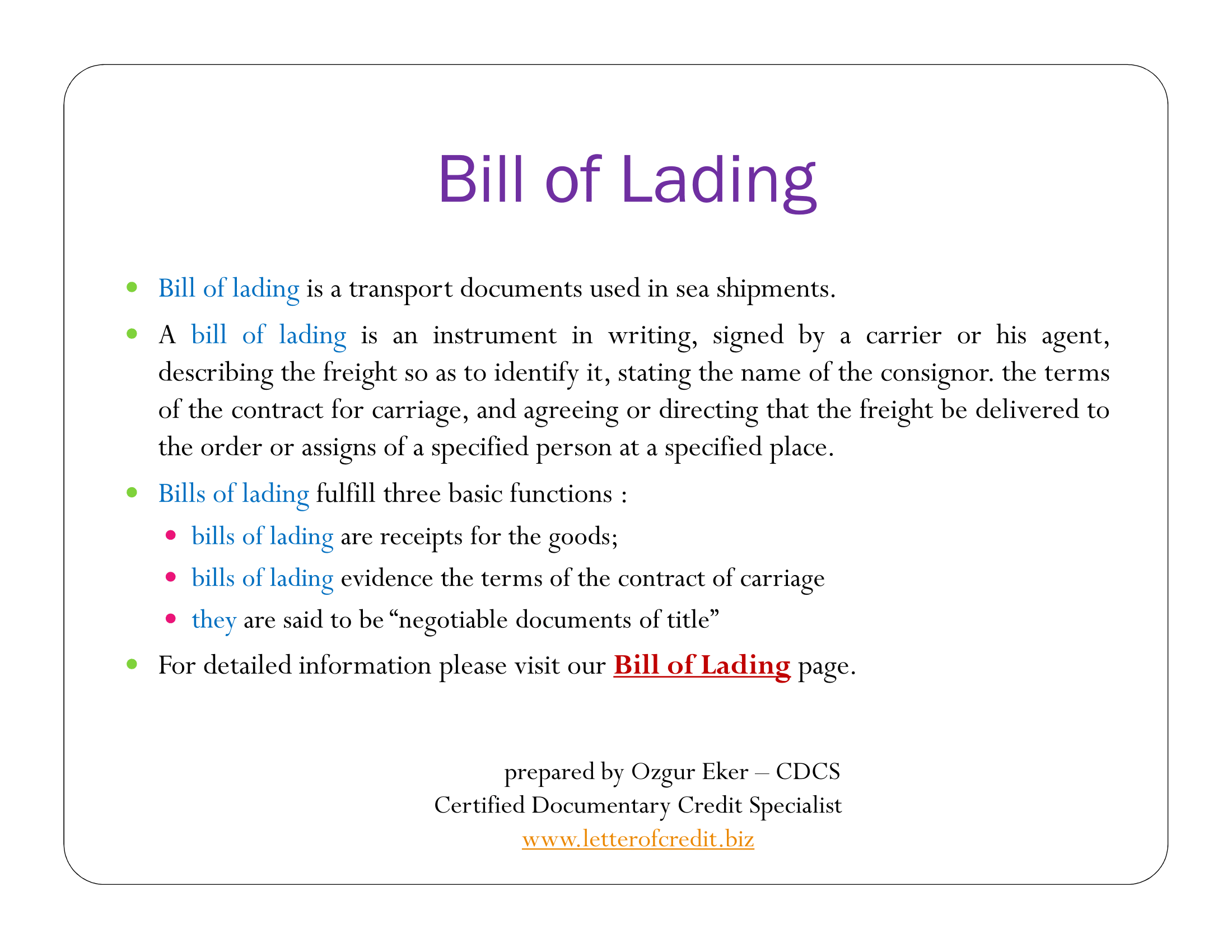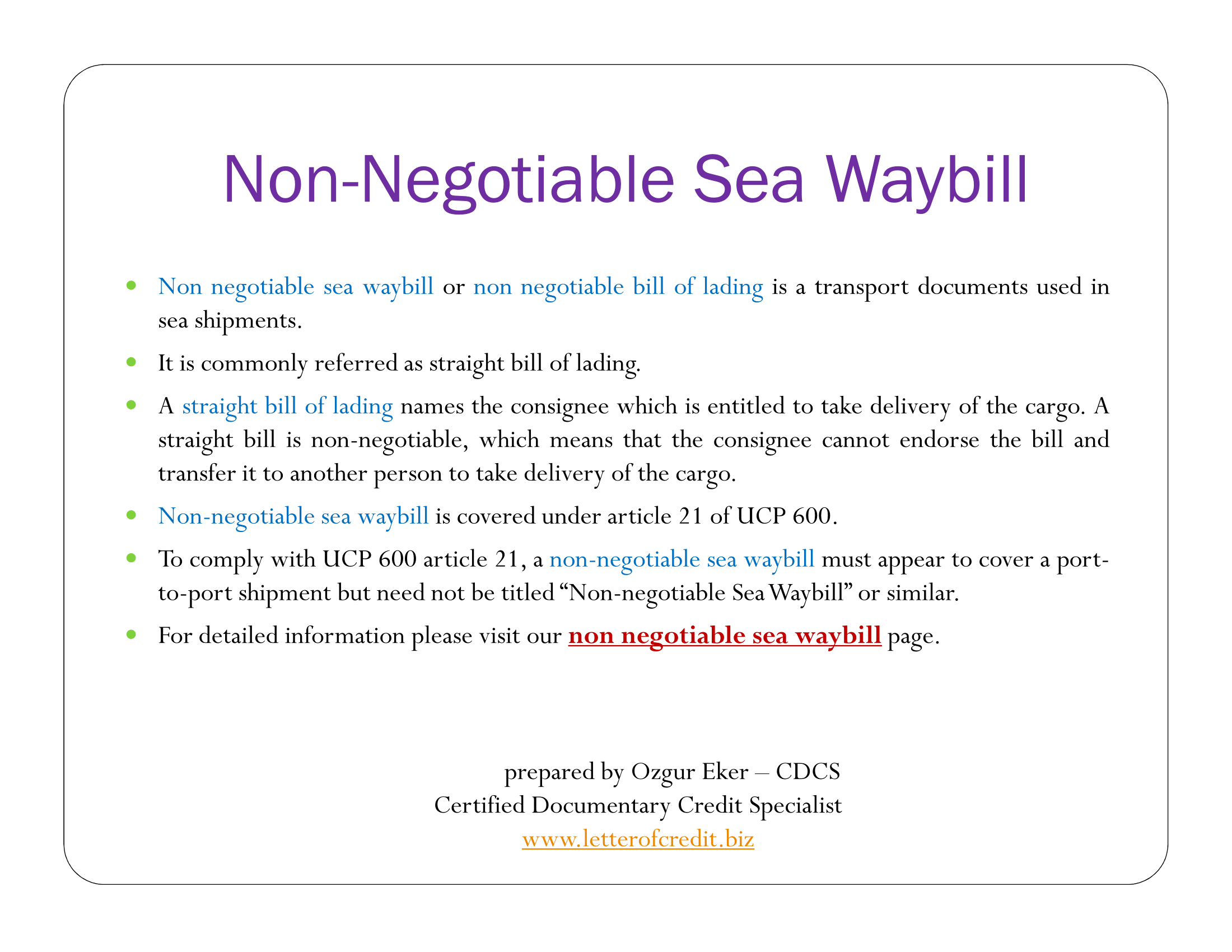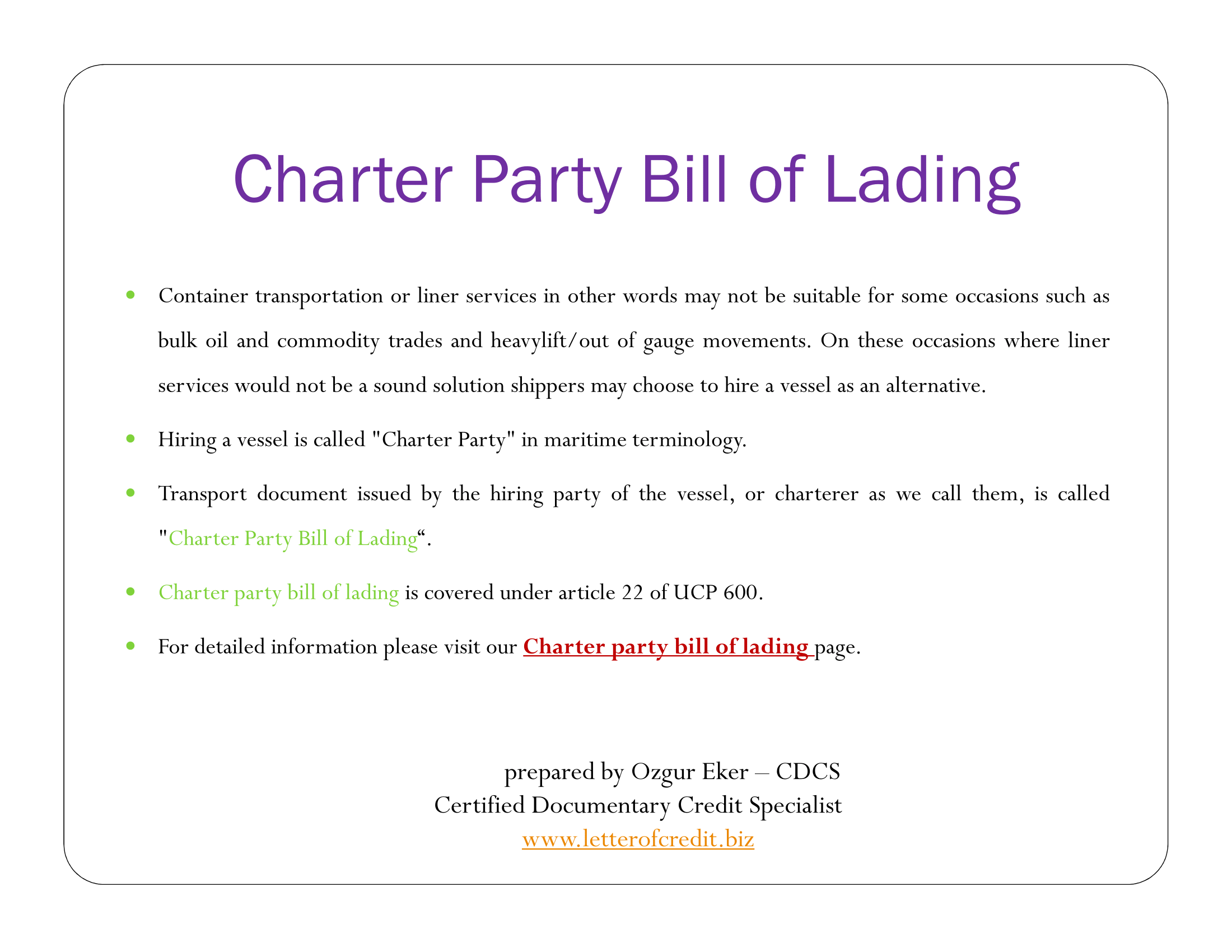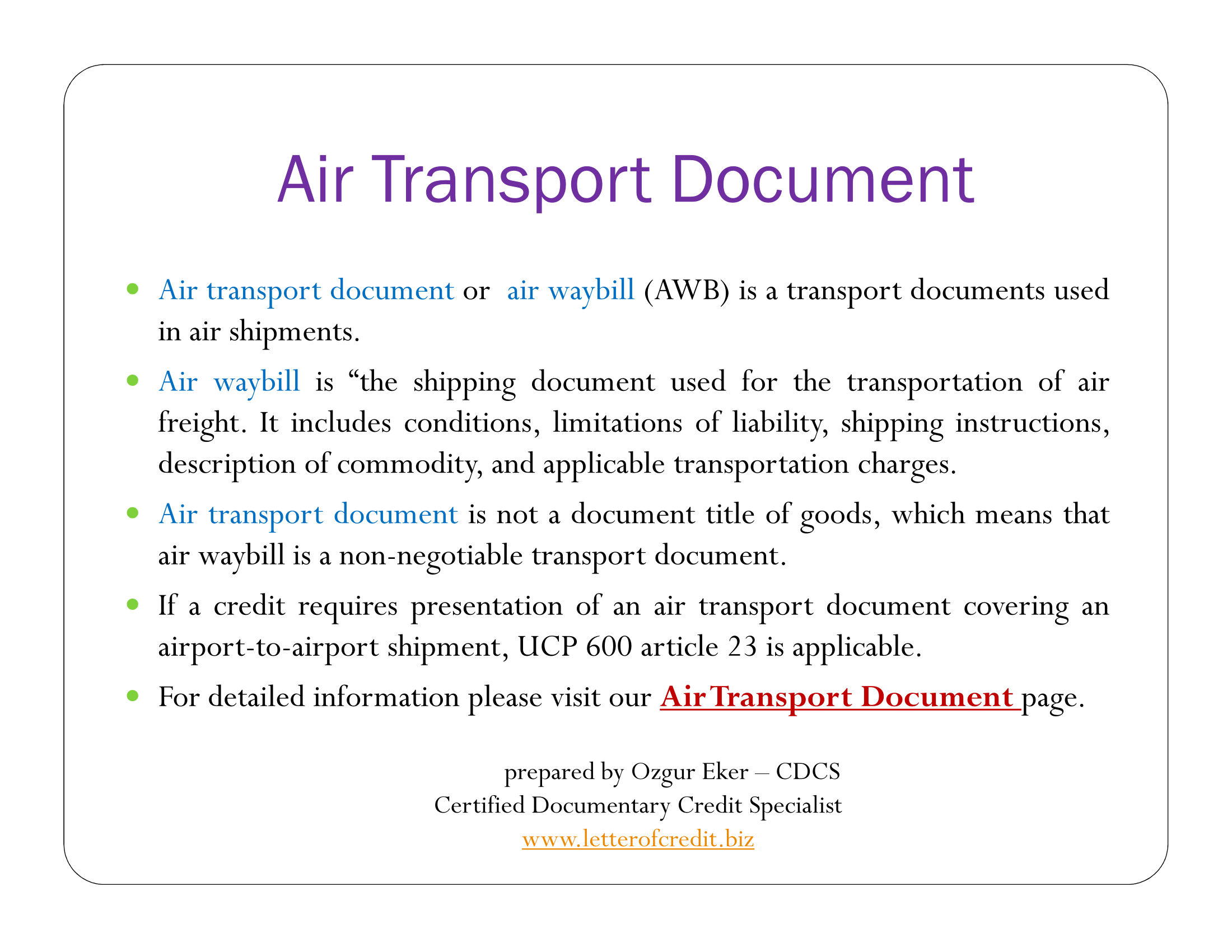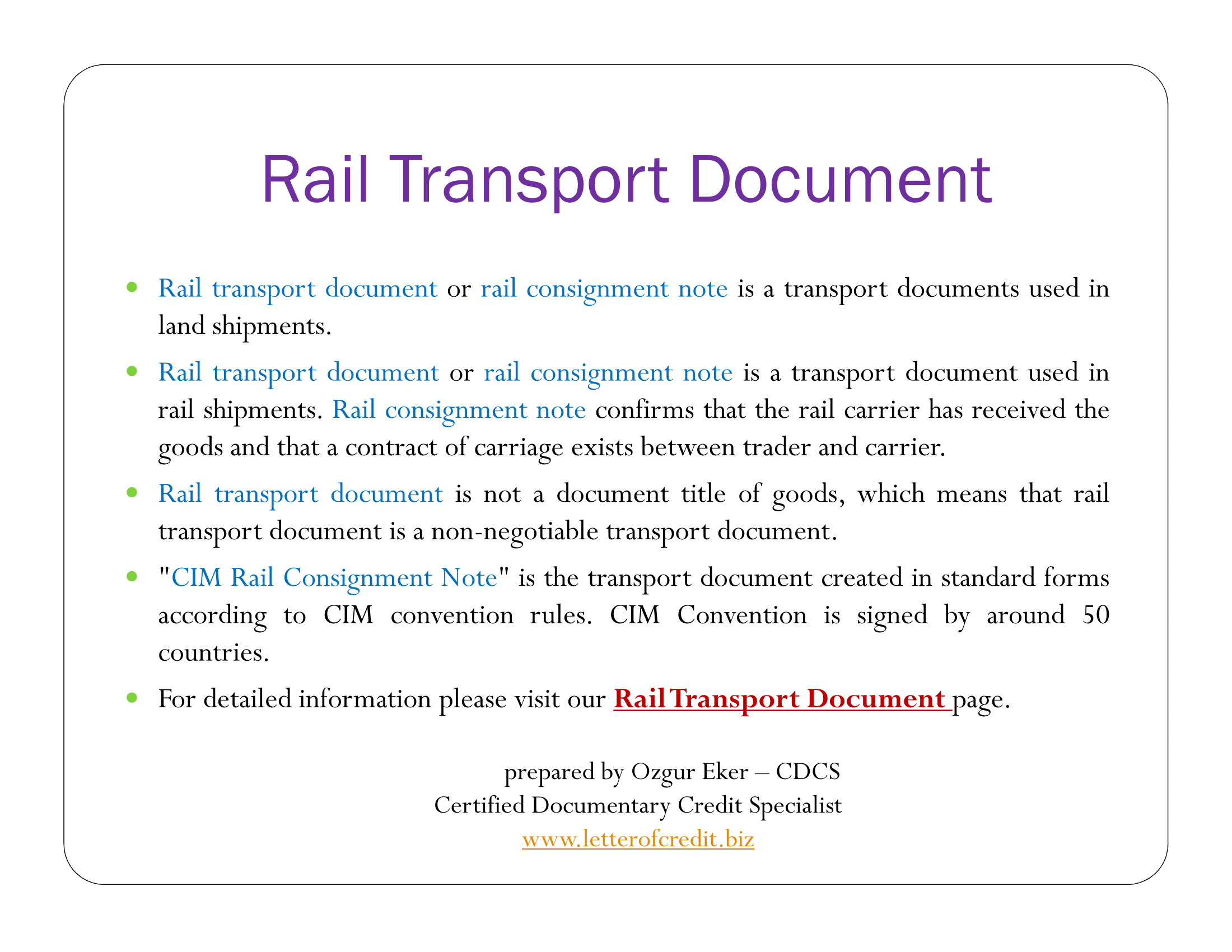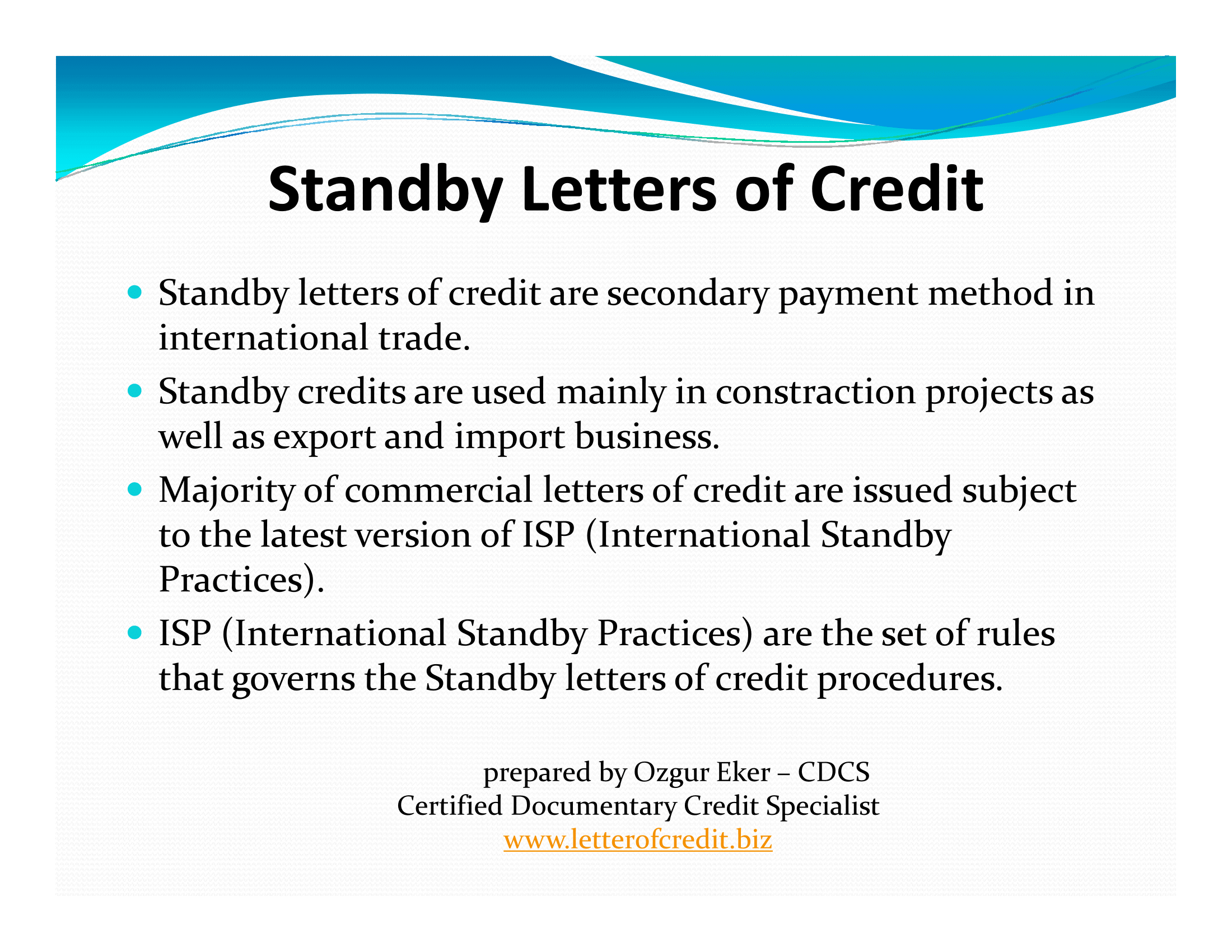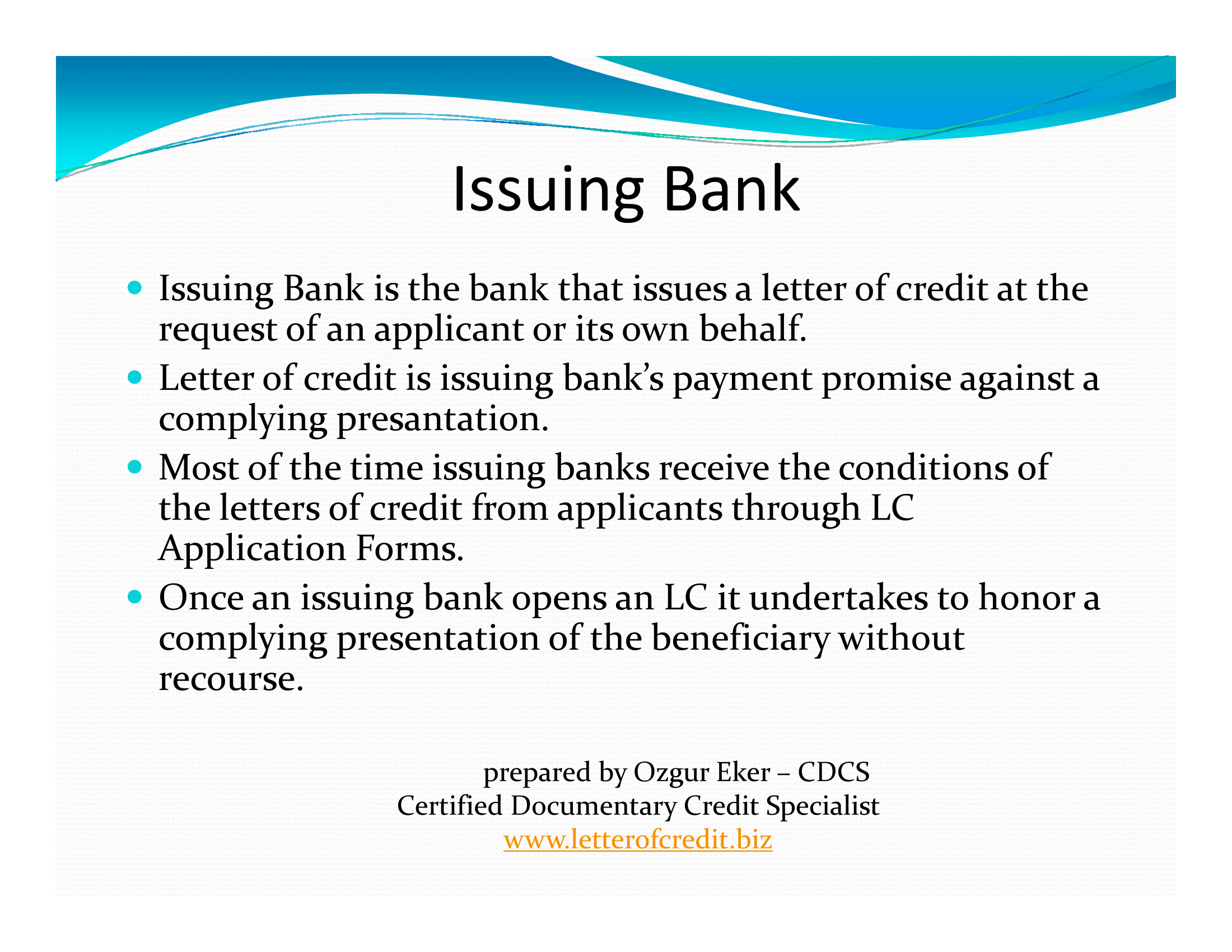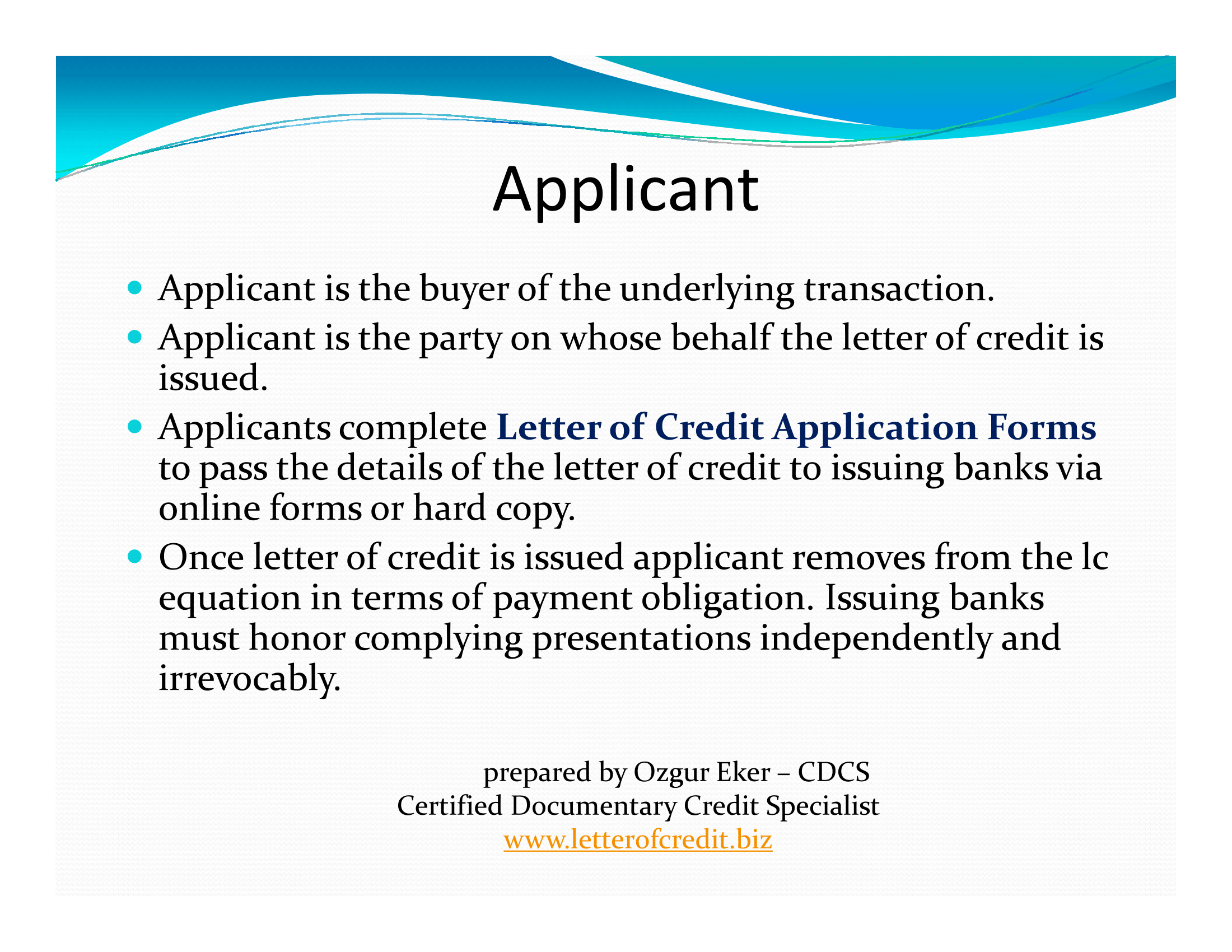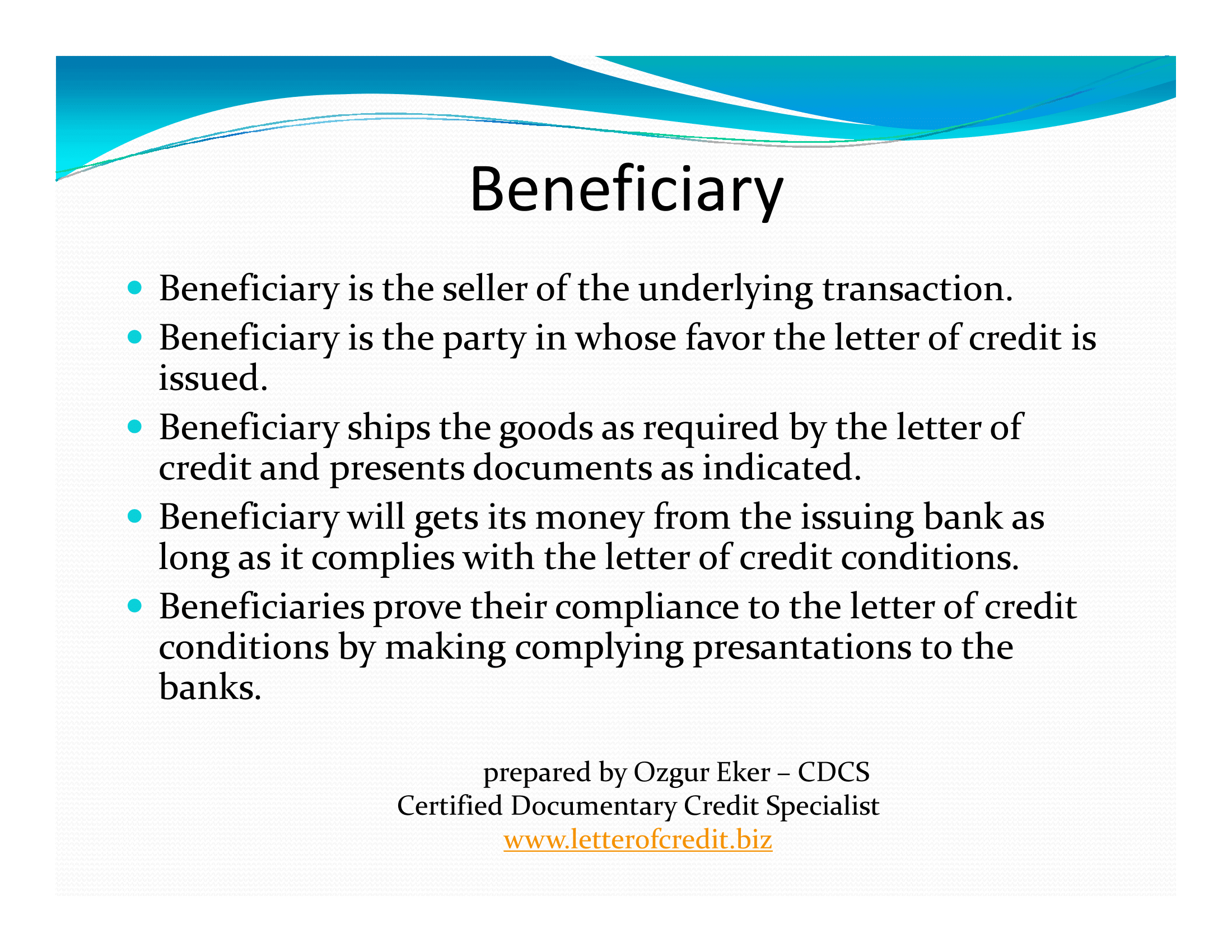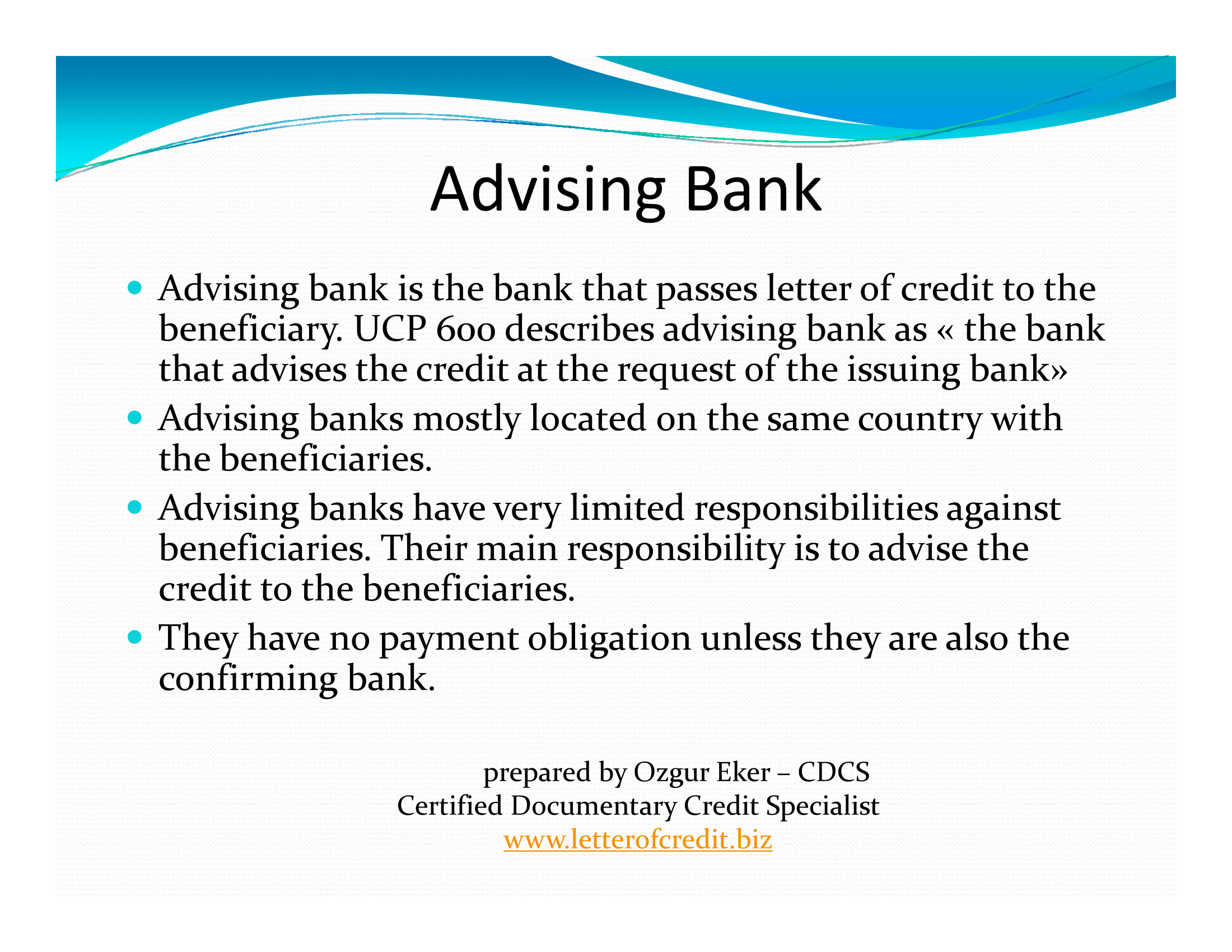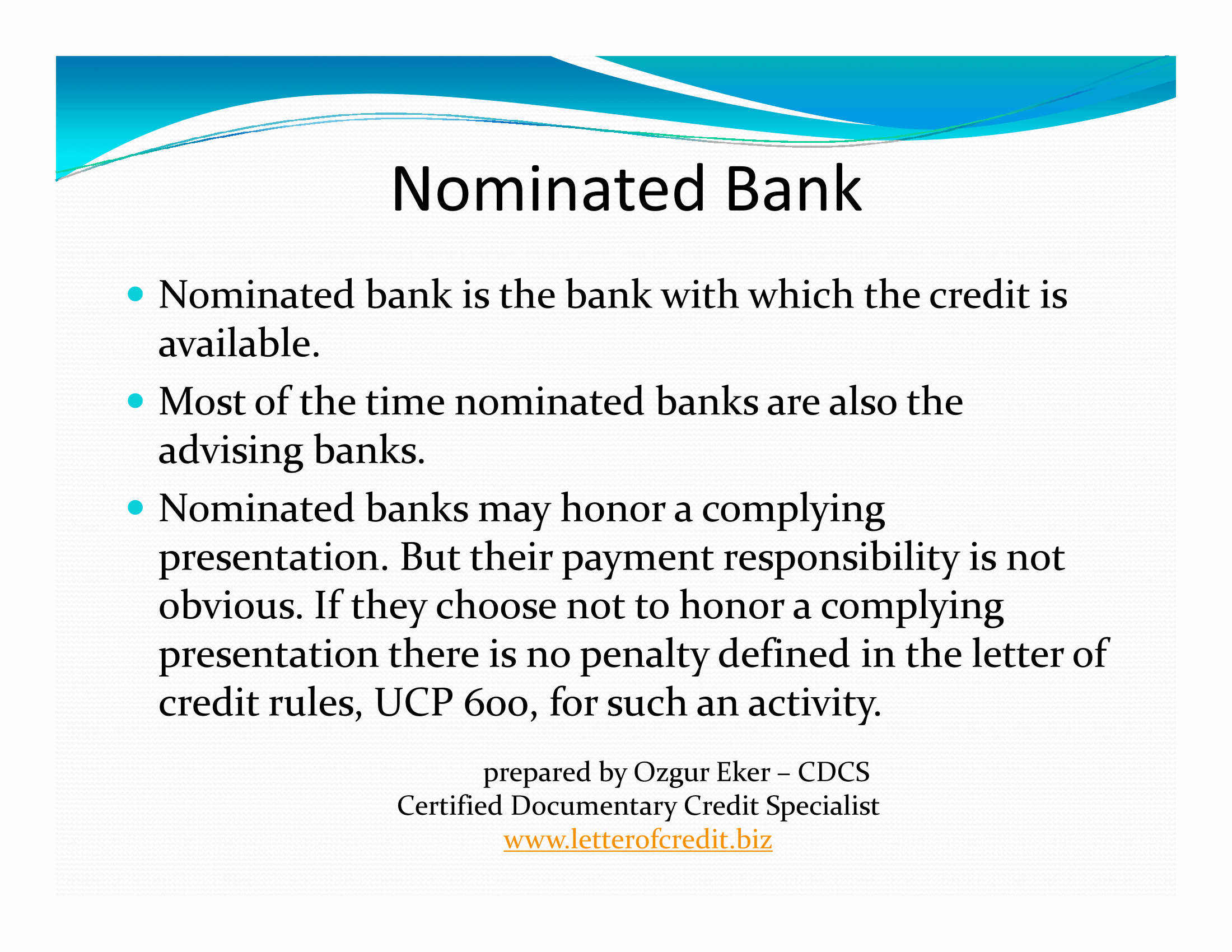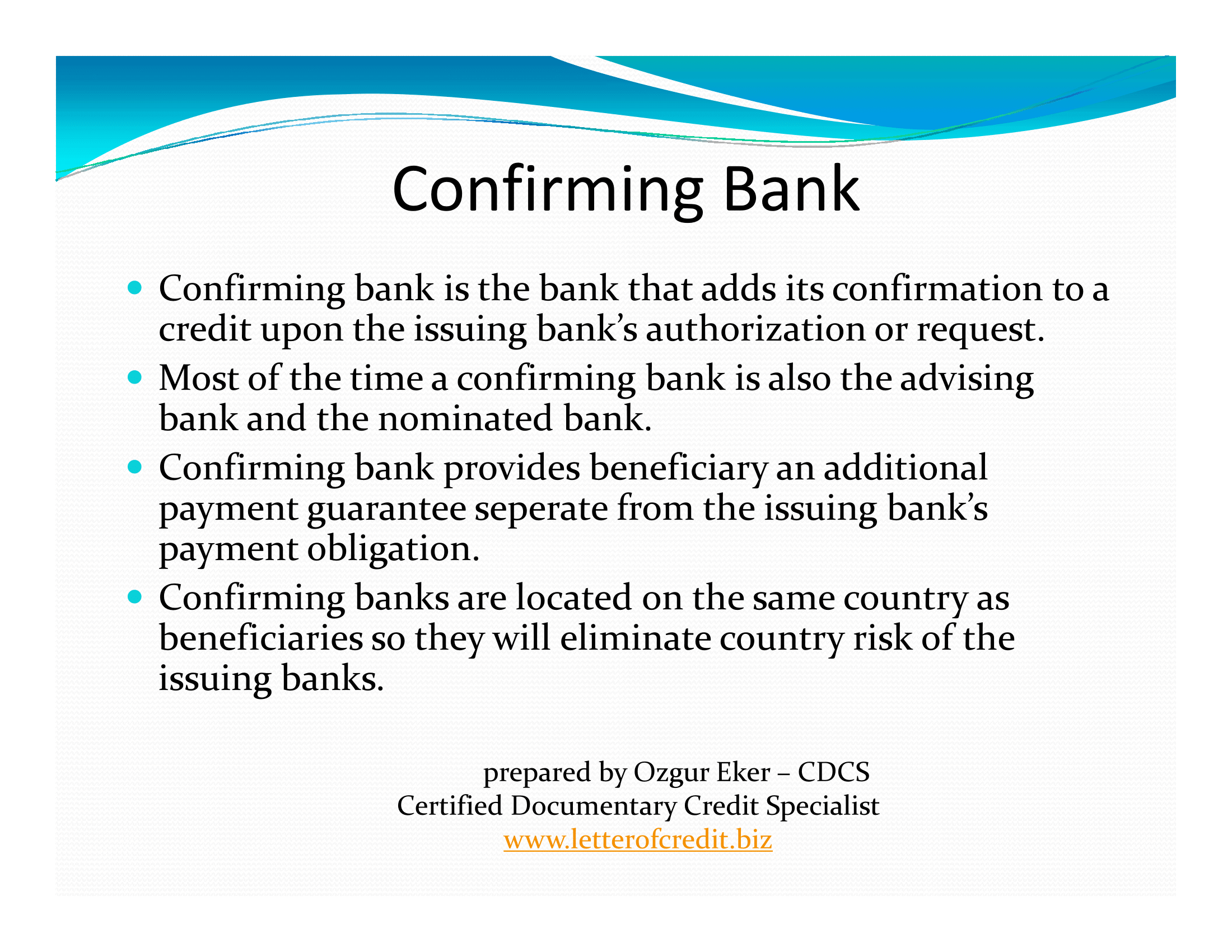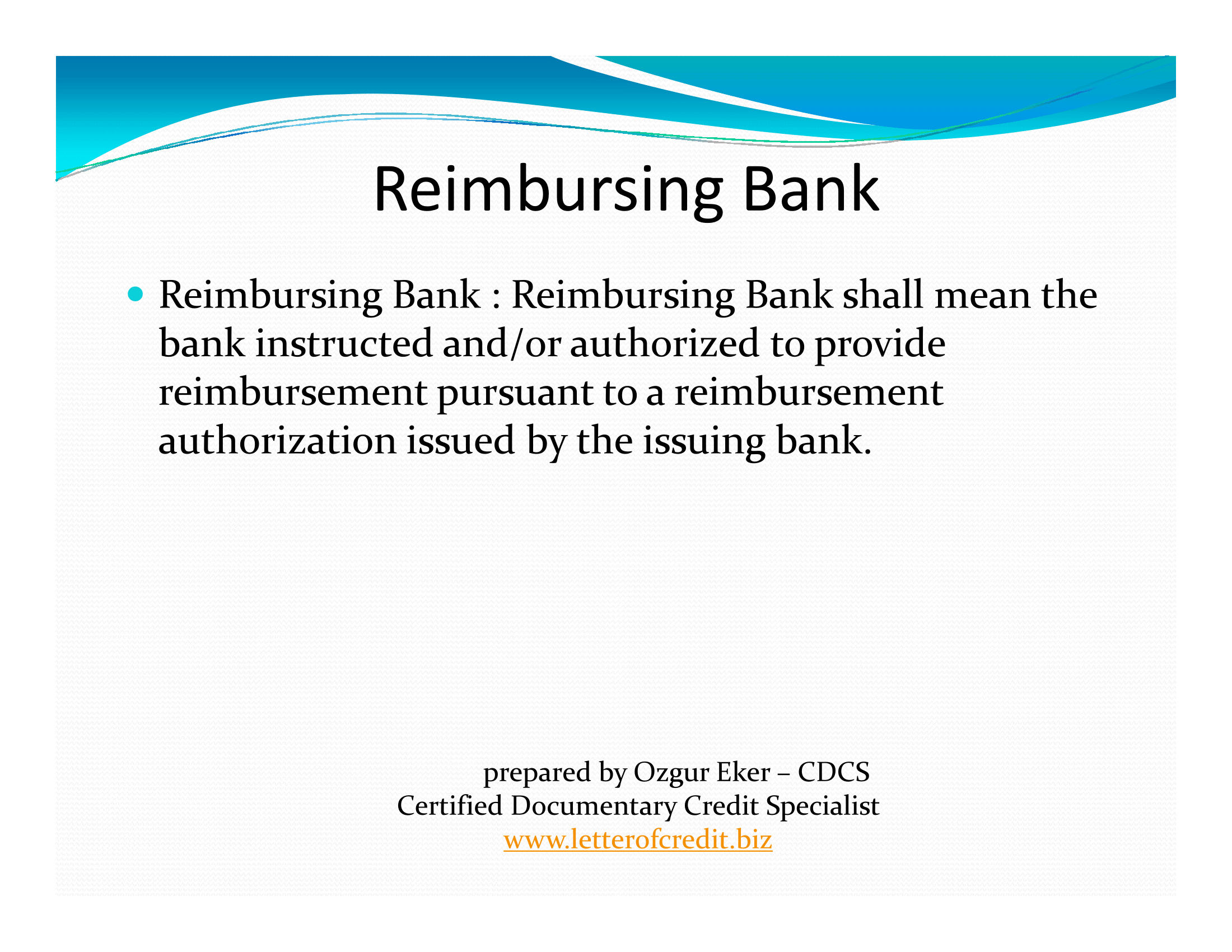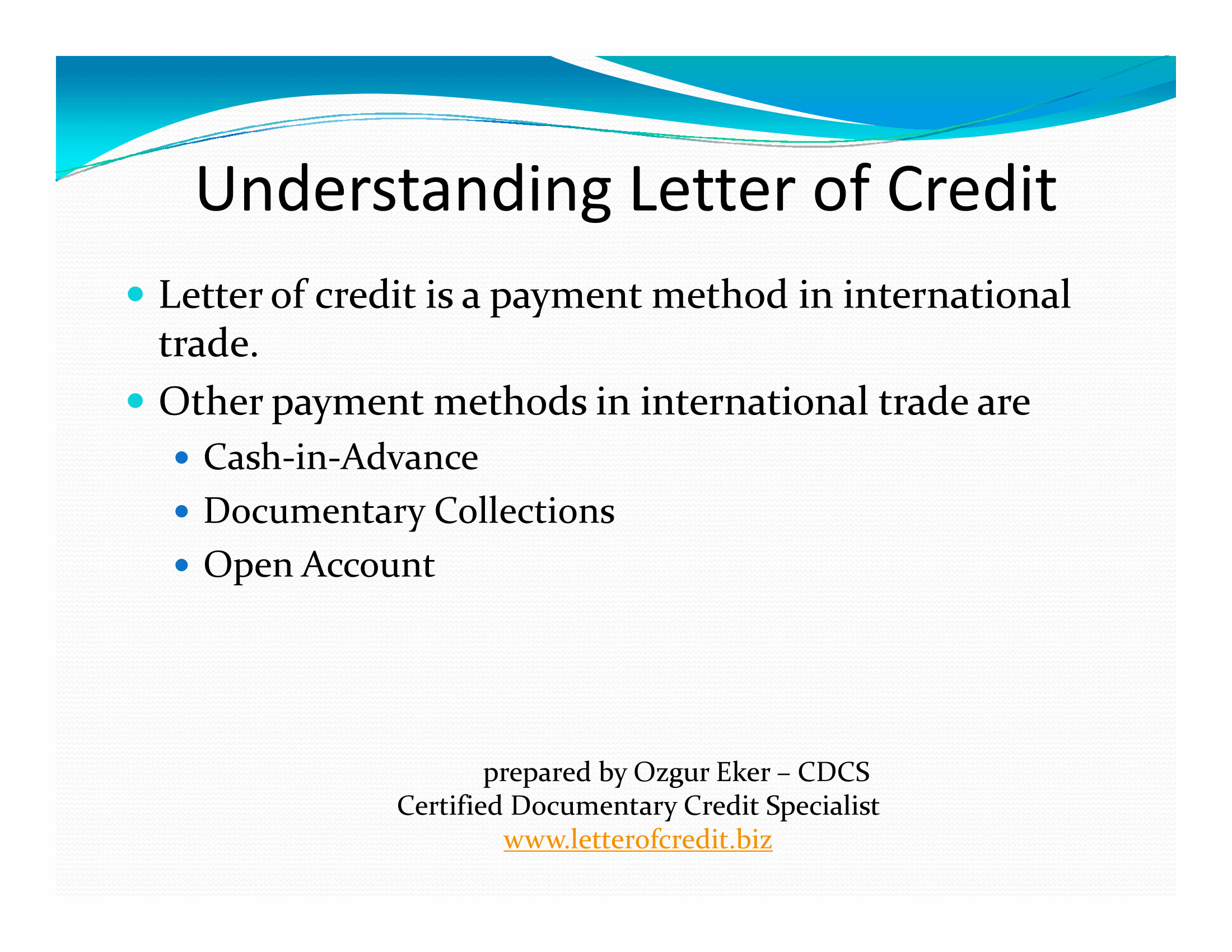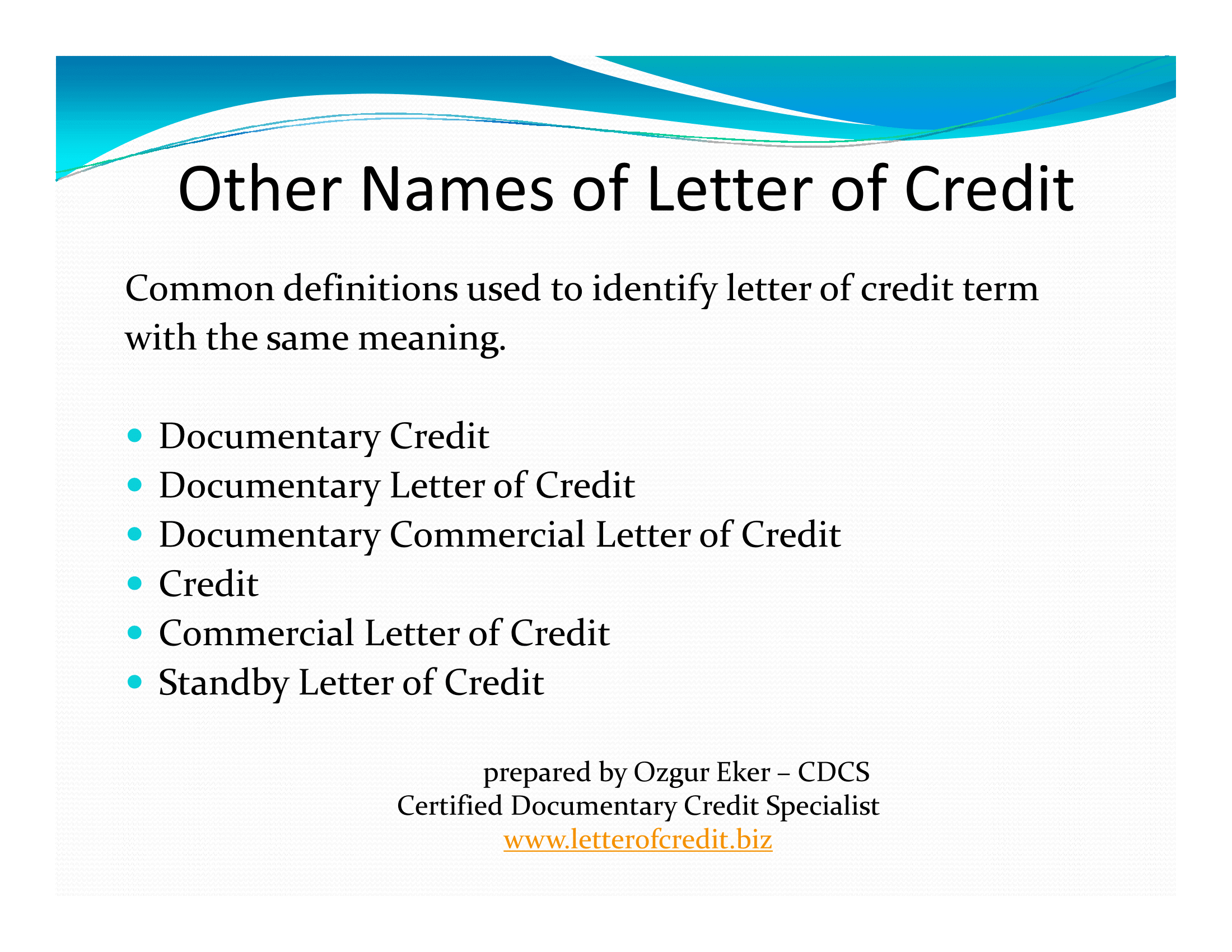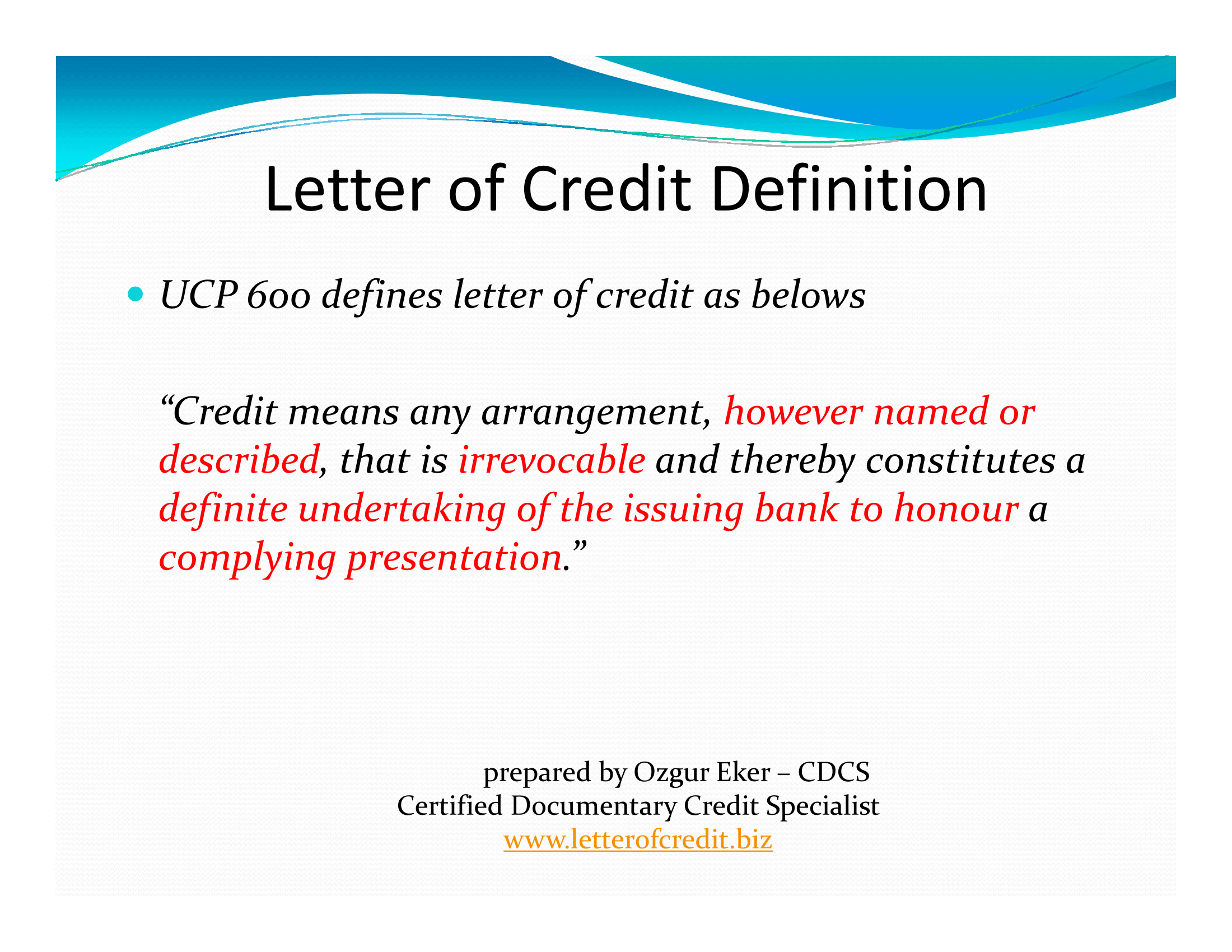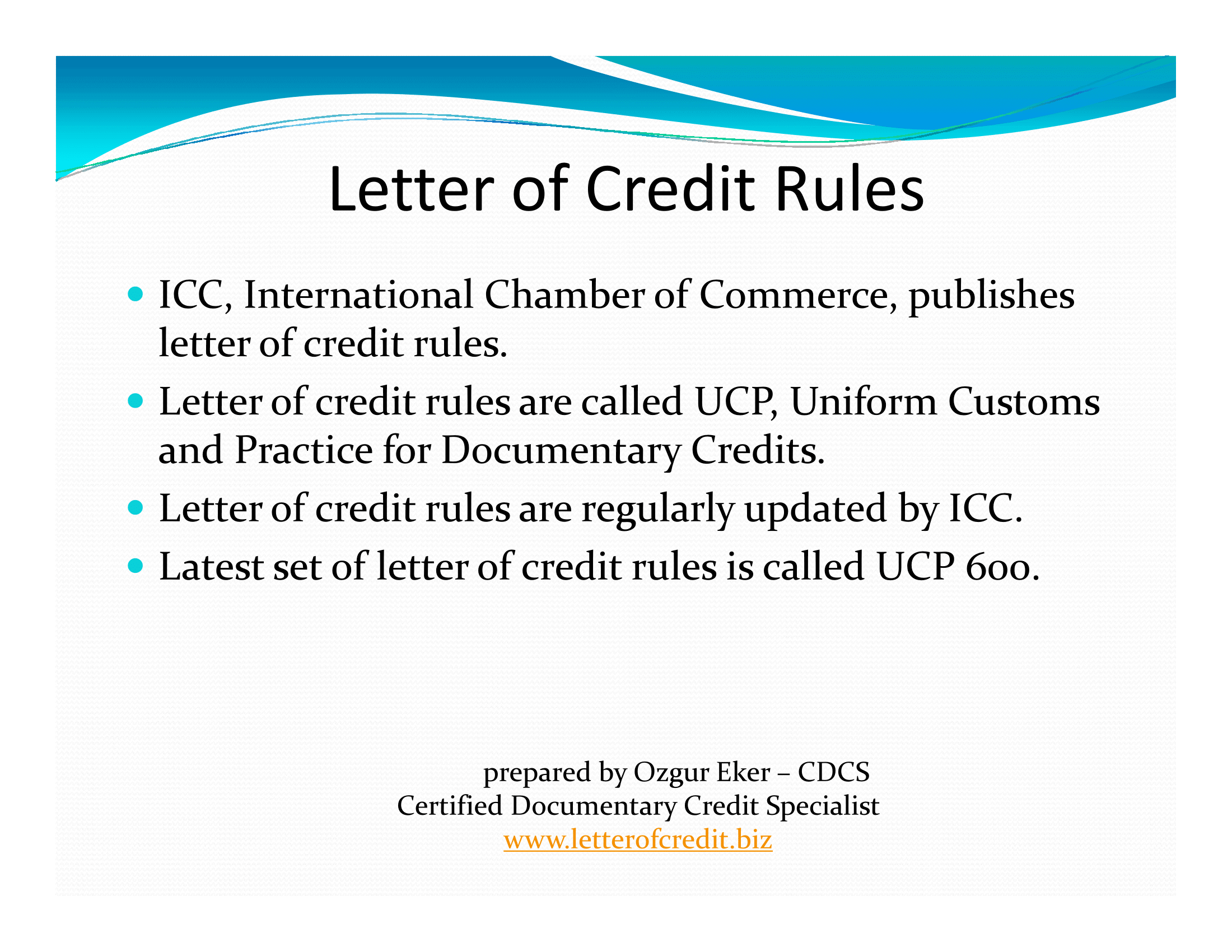What is a Discrepancy?
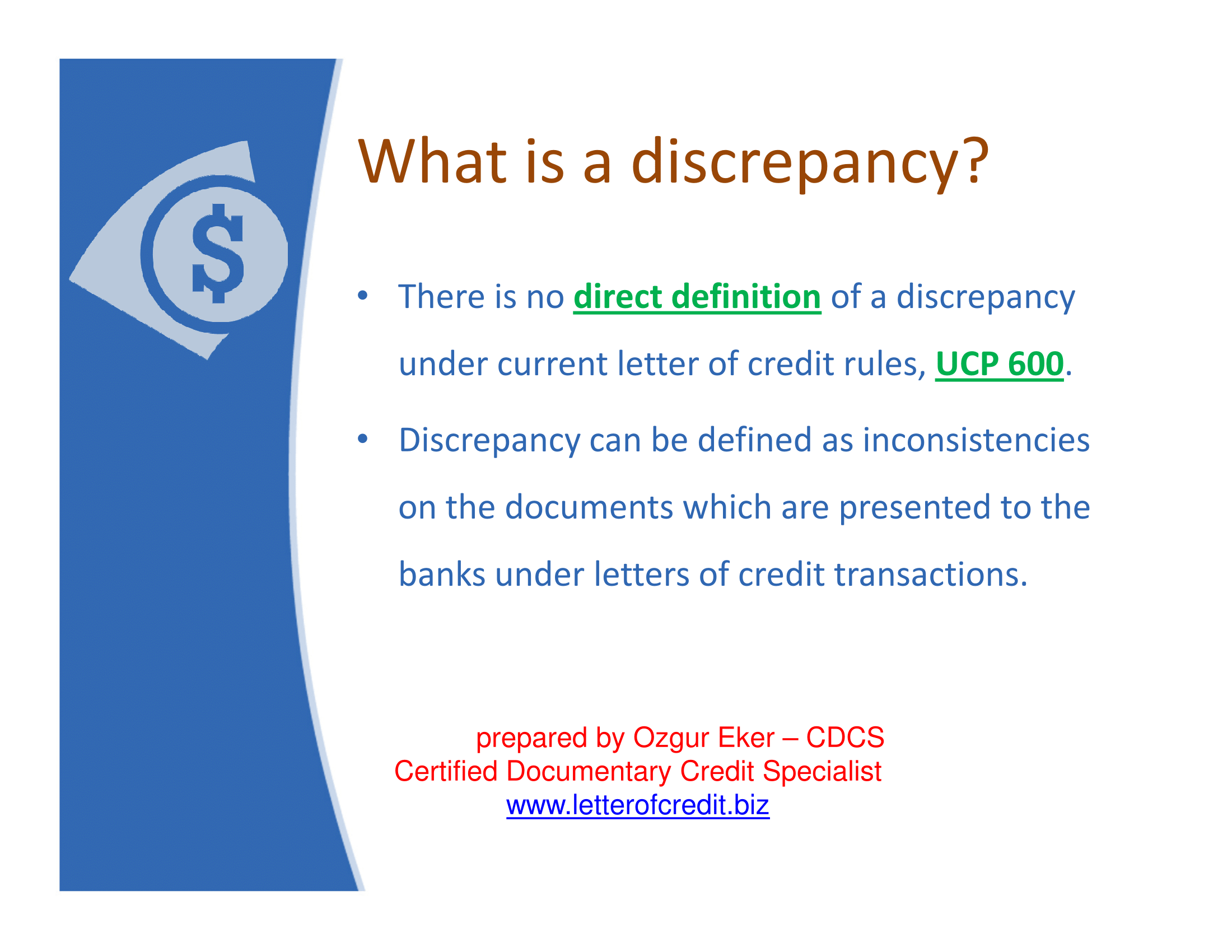
- There is no definition of a discrepancy under the current letter of credit rules, UCP 600.
- Discrepancy can be defined as inconsistencies on the documents which are presented to the banks under letters of credit transactions.
Prevalence of Discrepancies
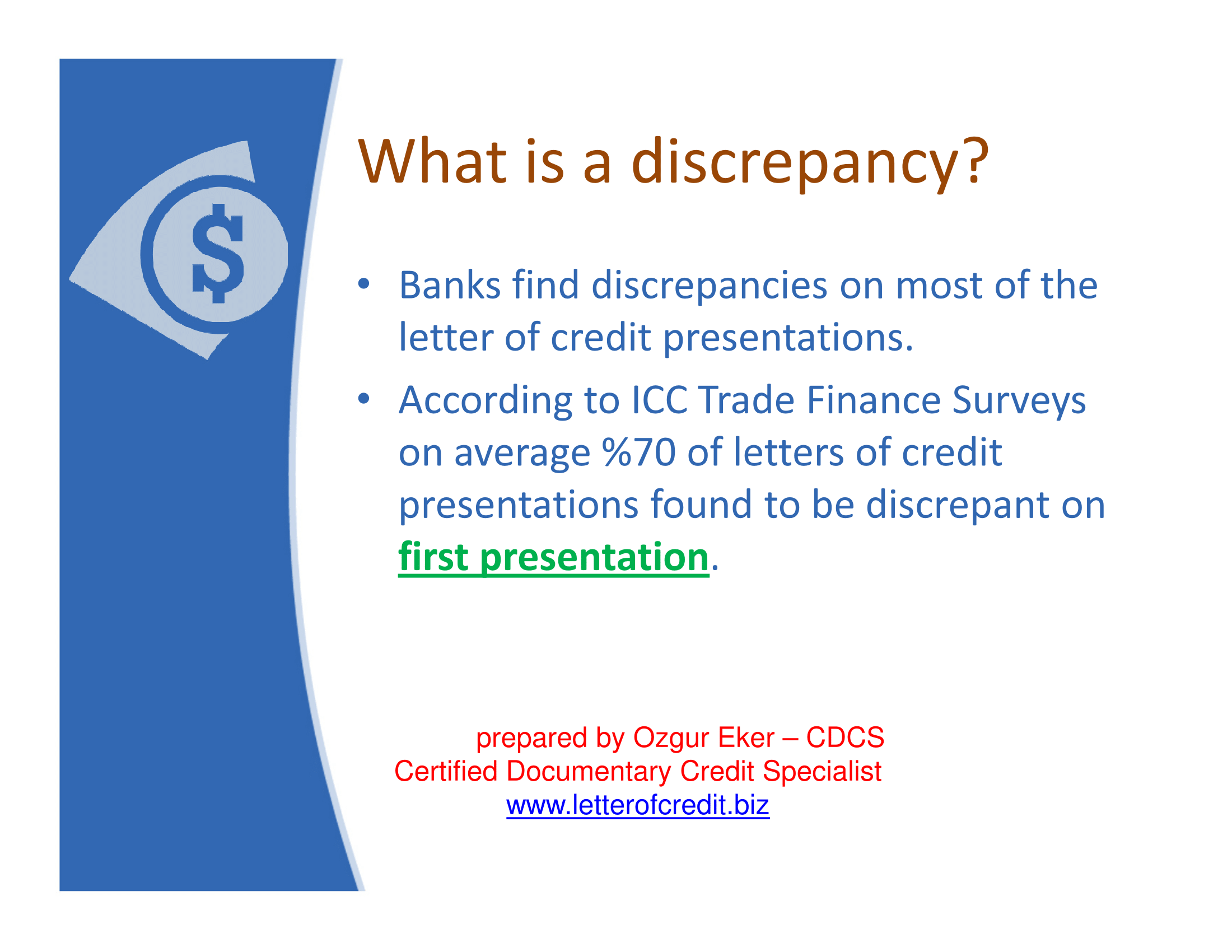
- Banks find discrepancies on most of the letter of credit presentations.
- According to ICC Trade Finance Surveys on average %70 of letters of credit presentations found to be discrepant on first presentation.
Distribution of Discrepancies
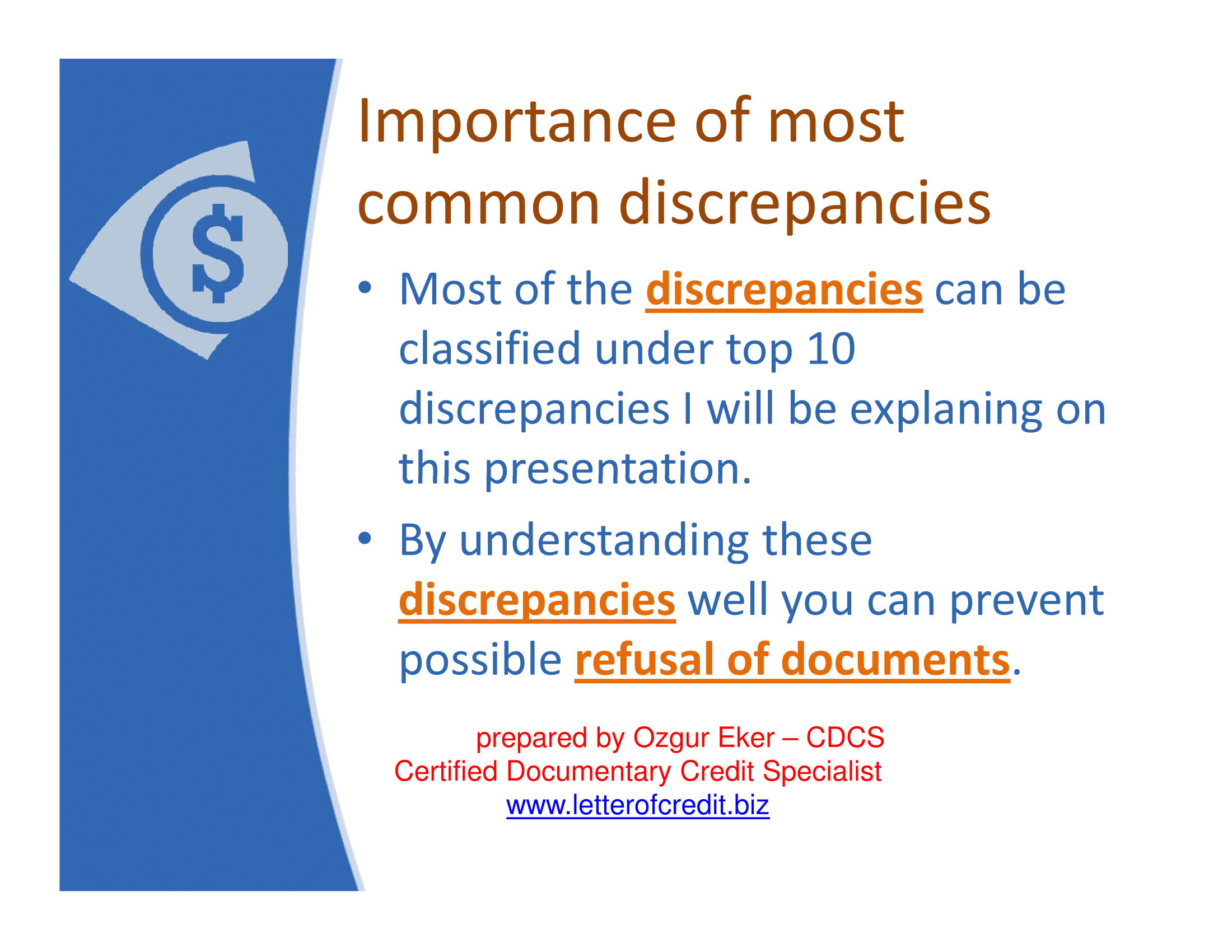
- This presentation explains the most frequently seen discrepancy types.
- By understanding these discrepancies, you will be able to prevent possible grounds for refusal of the documents.
Most Common Discrepancy 1: Inconsistency in Documents
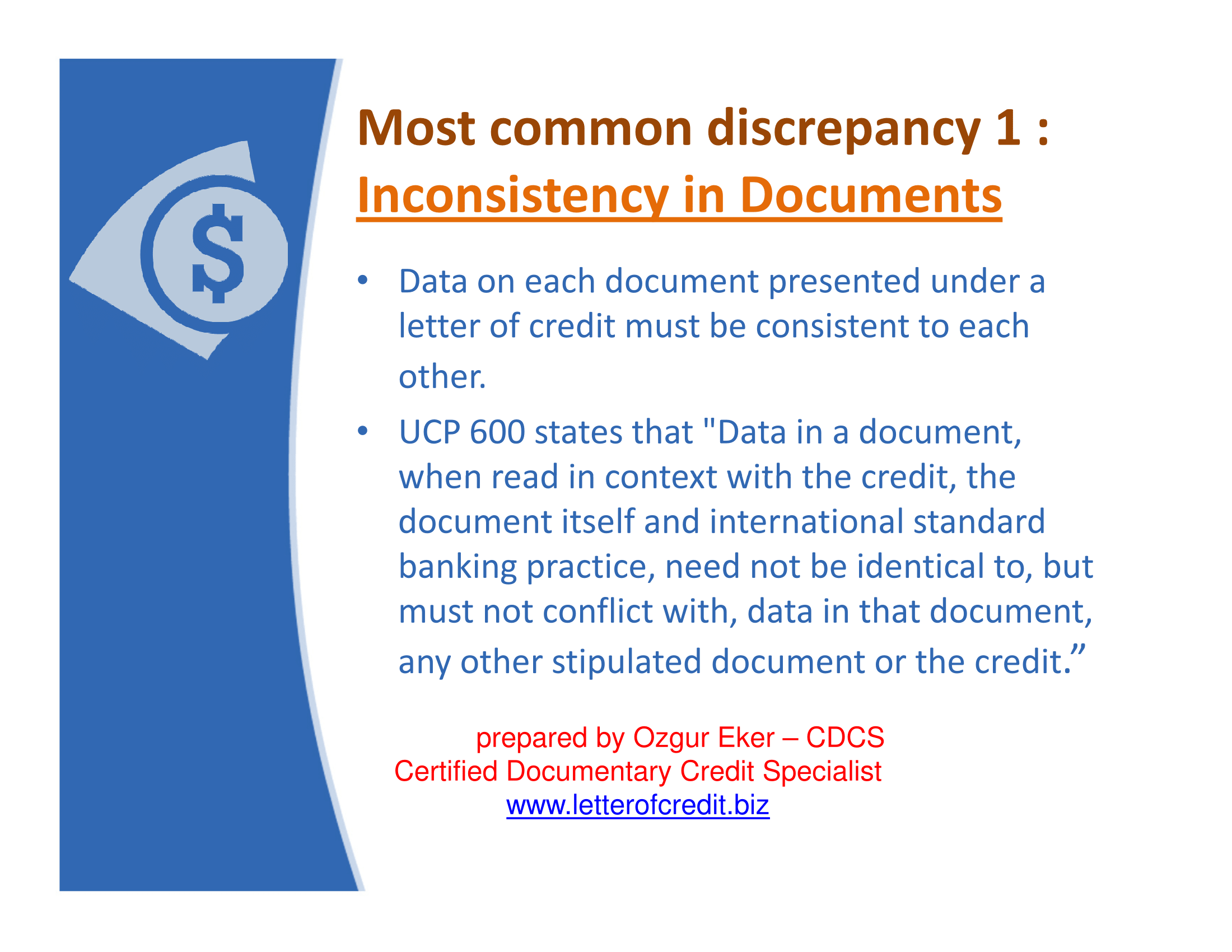
- Data on each document presented under a letter of credit must be consistent to each other.
- UCP 600 states that “Data in a document, when read in context with the credit, the document itself and international standard banking practice, need not be identical to, but must not conflict with, data in that document, any other stipulated document or the credit.”
Most Common Discrepancy 1: Inconsistency in Documents
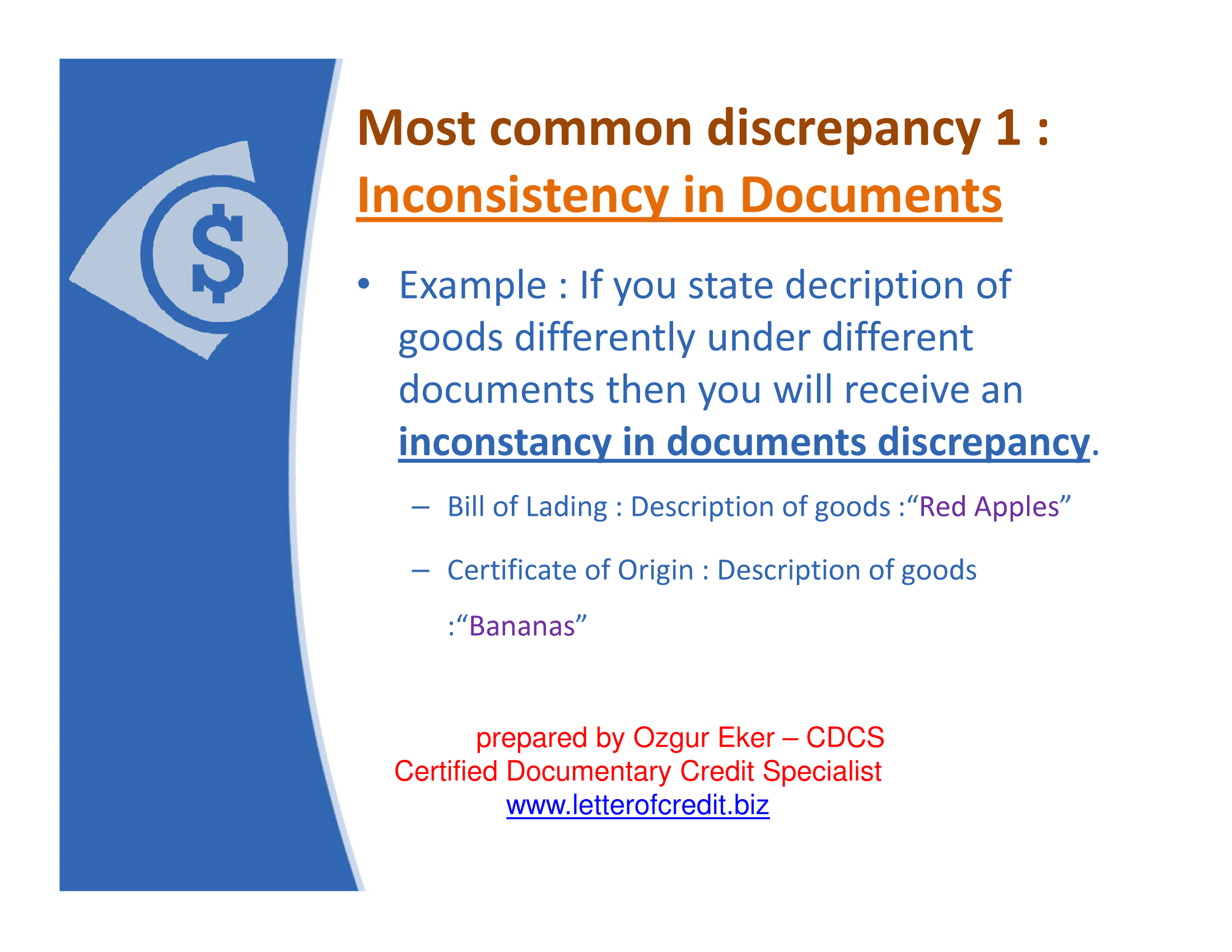
- Example: If the description of goods stated differently under the same presentation on two different documents, this will create an inconstancy in documents discrepancy.
- Bill of Lading: Description of goods: “Red Apples”
- Certificate of Origin: Description of goods: “Bananas”
Most Common Discrepancy 2: Incorrect Data
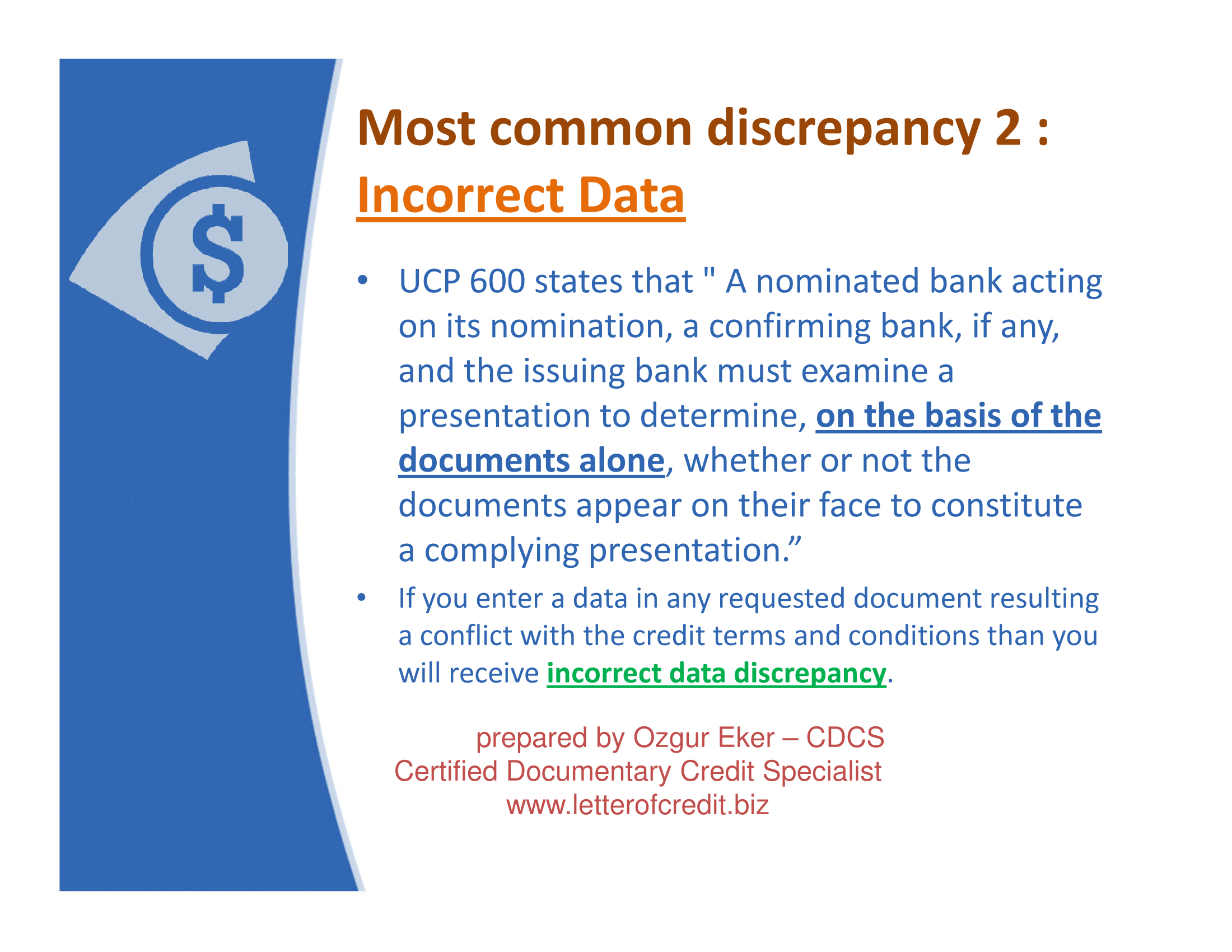
- UCP 600 states that ” A nominated bank acting on its nomination, a confirming bank, if any, and the issuing bank must examine a presentation to determine, on the basis of the documents alone, whether or not the documents appear on their face to constitute a complying presentation.”
- If the exporter enters a data in any requested document resulting a conflict with the credit terms and conditions, then the exporter will receive an incorrect data discrepancy.
Most Common Discrepancy 2: Incorrect Data
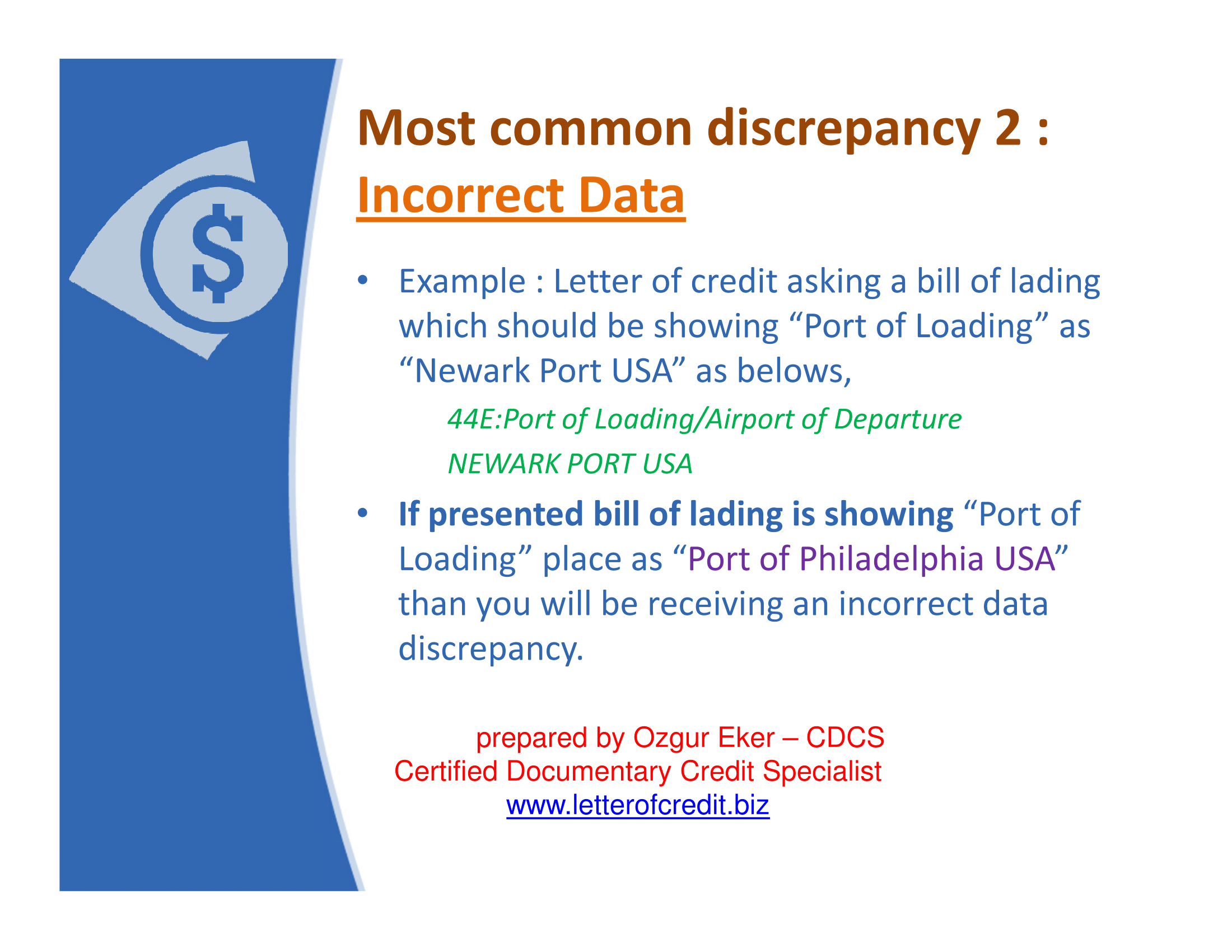
Example : Letter of credit asking a bill of lading which should be showing “Port of Loading” as “Newark Port USA” as below,
44E: Port of Loading/Airport of Departure
NEWARK PORT USA
• If presented bill of lading is showing “Port of Loading” as “Port of Philadelphia USA”,
then the beneficiary will be receiving an incorrect data discrepancy from the issuing bank.
Most Common Discrepancy 3: Late Shipment
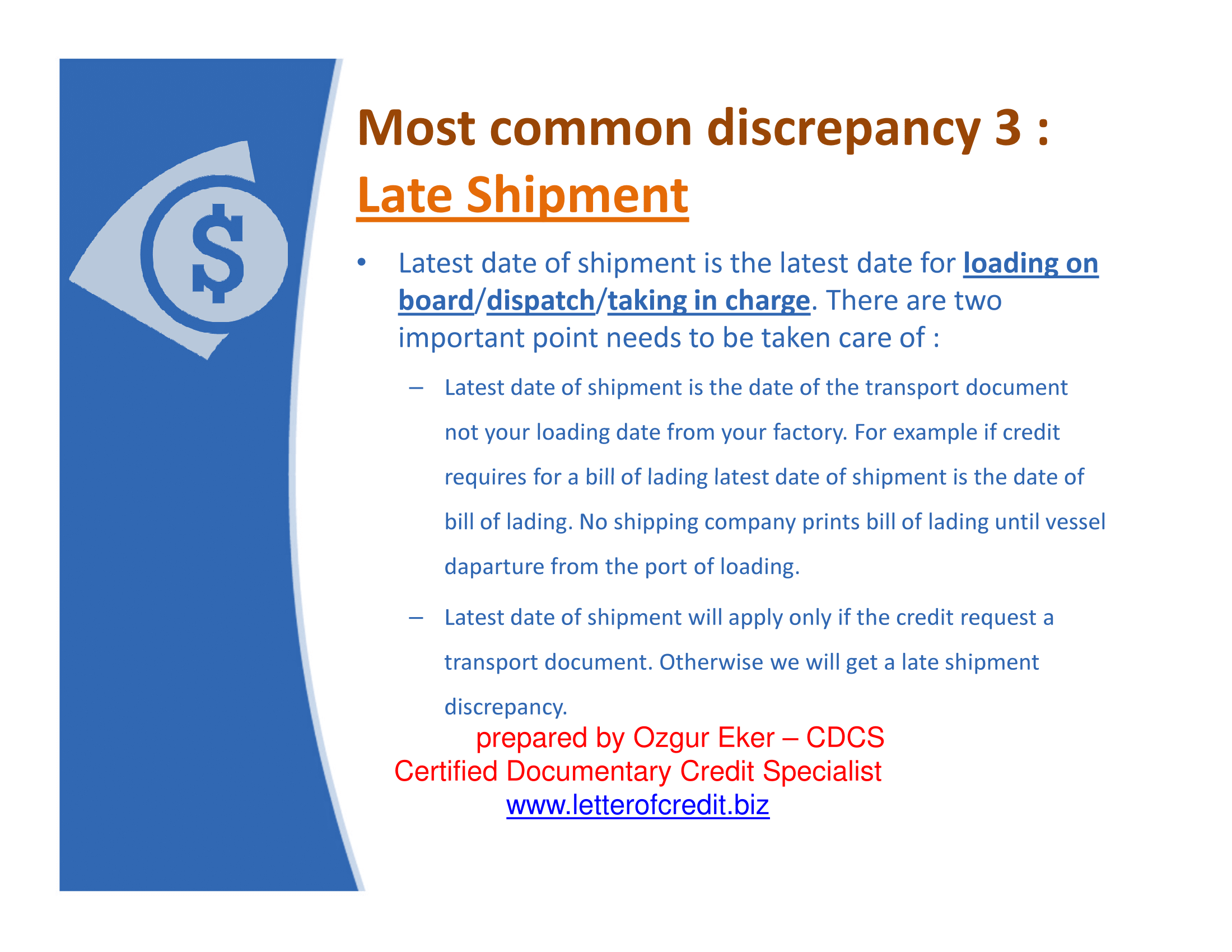 Latest date of shipment is the latest date for loading on board/dispatch/taking in charge.
Latest date of shipment is the latest date for loading on board/dispatch/taking in charge.
There are two important point needs to be taken care of:
- Latest date of shipment is the date of the transport document not your loading date from your factory. For example, if credit requires of a bill of lading as a transport document; the latest date of shipment is the on board date of bill of lading.
- Latest date of shipment will apply only if the credit request presentation of a transport document.
Most Common Discrepancy 3: Late Shipment
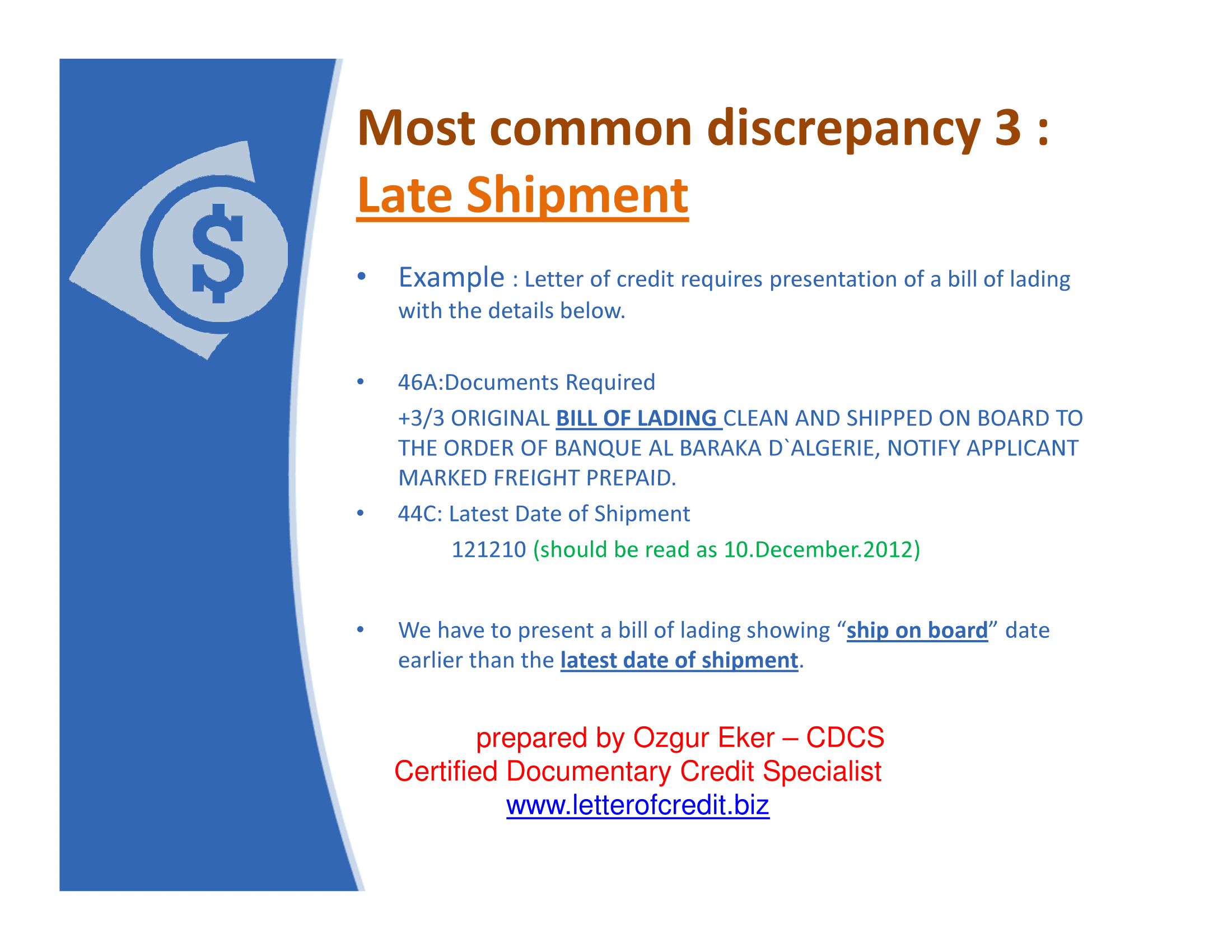
• Example : Letter of credit requires presentation of a bill of lading with the details below.
46A: Documents Required
3/3 Original bill of lading clean and shipped on board to the order of Banque al Baraka d`Algeria, notify applicant marked freight prepaid.
44C: Latest Date of Shipment
121210 (Should be read as 10.December.2012)
•The beneficiary has to present a bill of lading showing “ship on board” date earlier than the latest date of shipment indicated in the letter of credit.
Most Common Discrepancy 4: Late Presentation
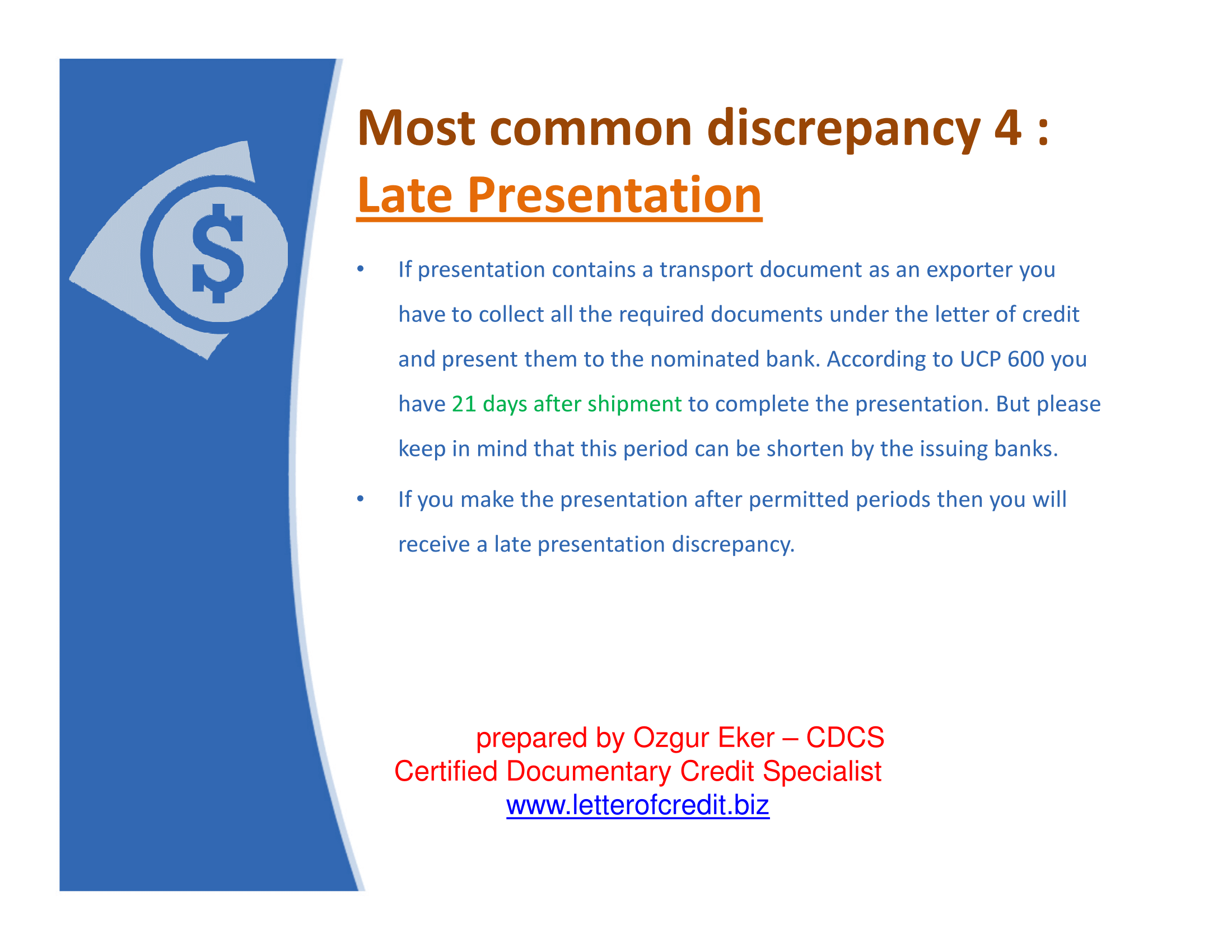
- If presentation contains a transport document, the exporter has to collect all the required documents and present them to the nominated bank within 21 days after the shipment according to the letter of credit rules.
- Some issuing banks may shorten this standard period, especially when the transit time between port of loading and port of discharge is very short.
- If the exporter could not complete the presentation within permitted period, then the exporter will likely to receive a late presentation discrepancy
Most Common Discrepancy 4: Late Presentation
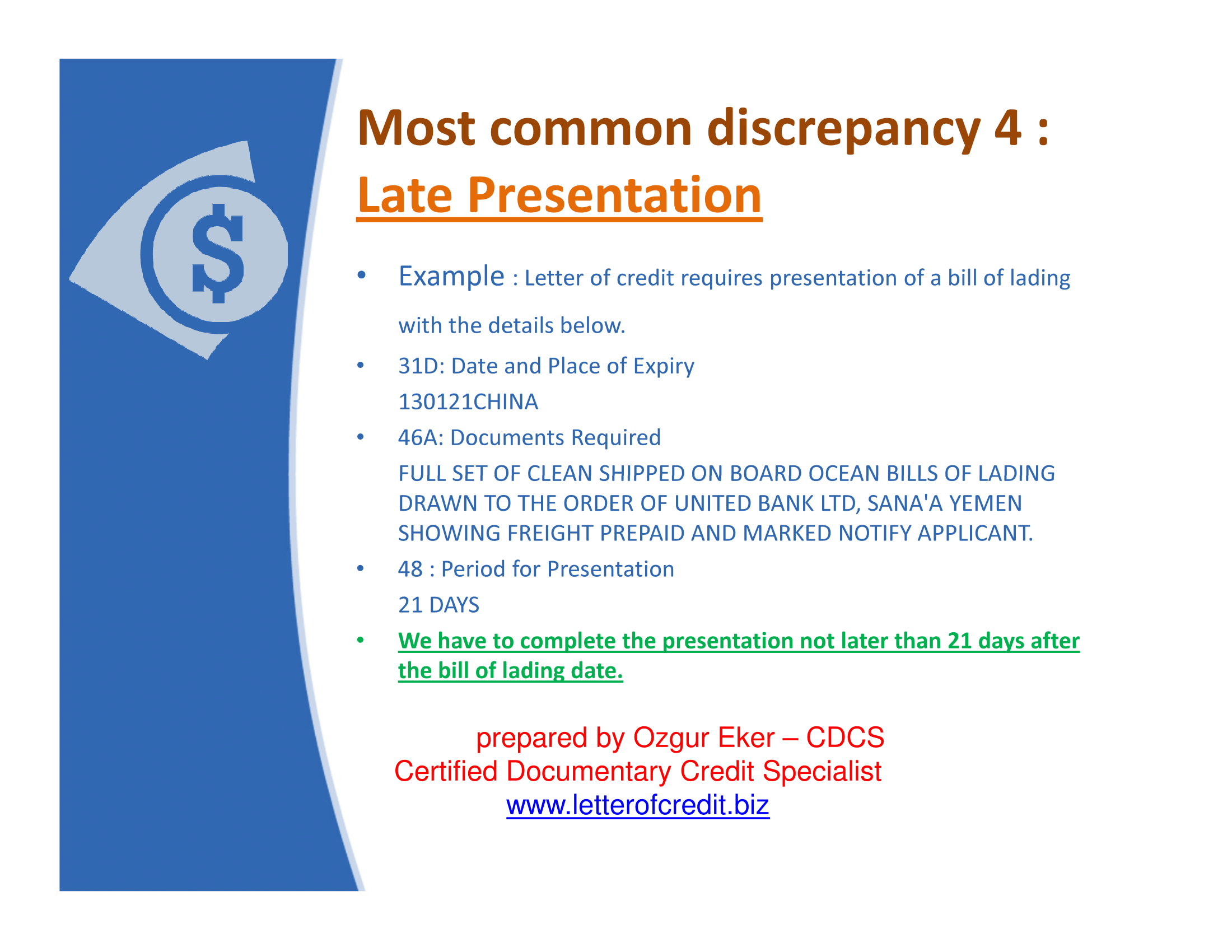
- Example : Letter of credit requires presentation of a bill of lading with the details below.
31D: Date and Place of Expiry
130121 China46A: Documents Required
Full set of clean shipped on board ocean bills of lading drawn to the order of United Bank ltd, Sana’a Yemen showing freight prepaid and marked notify Applicant.48 : Period for Presentation
21 Days
- Exporter has to complete the presentation not later than 21 days after the bill of lading date.
Most Common Discrepancy 5: Letter of Credit Expired
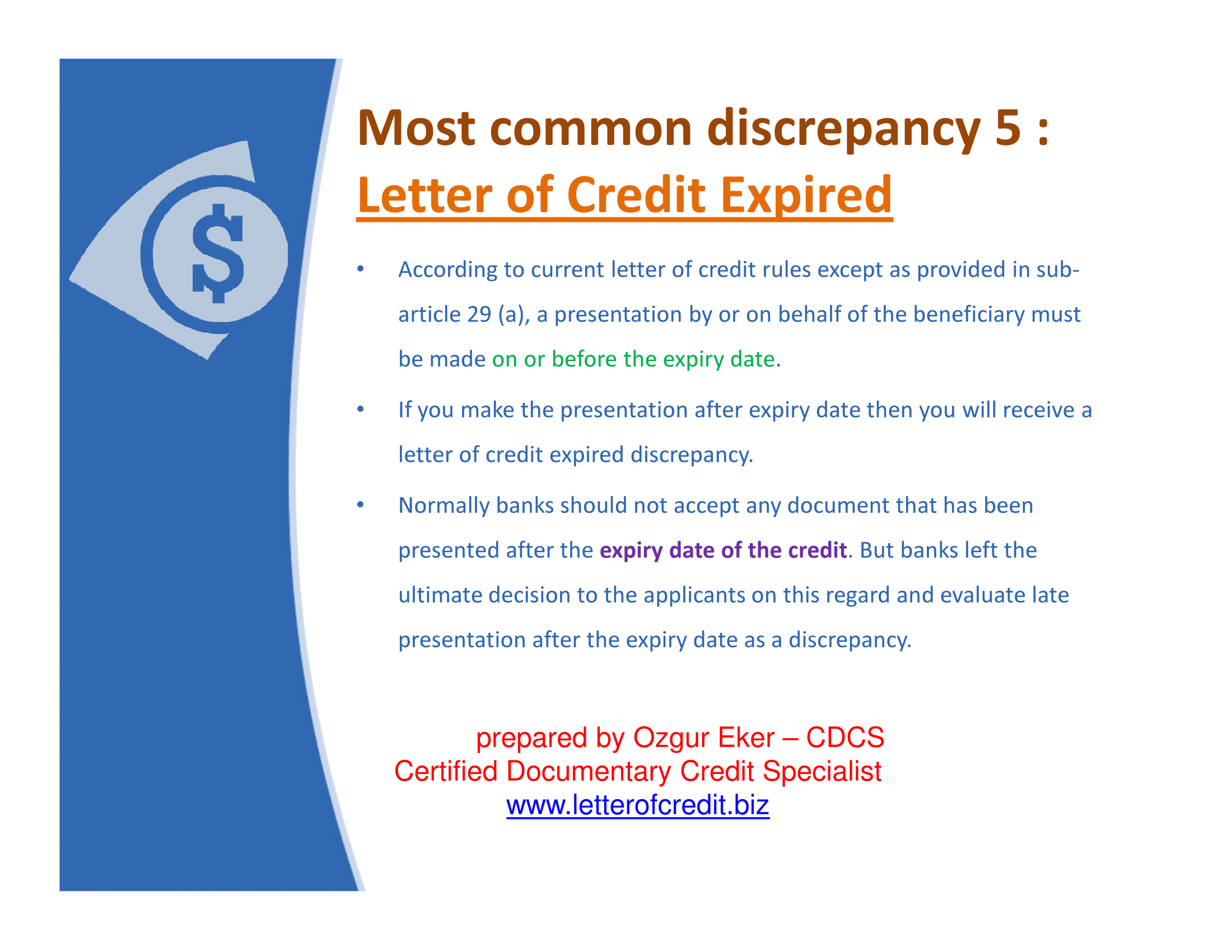
- According to current letter of credit rules except as provided in sub-article 29 (a), a presentation by or on behalf of the beneficiary must be made on or before the expiry date.
- If the beneficiary makes the presentation after the expiry date, then he will likely to receive a letter of credit expired discrepancy.
- Normally banks should not accept any document that has been presented after the expiry date of the credit. However, banks mostly prefer leaving the ultimate decision to the applicants on this regard and evaluate late presentation after the expiry date as a discrepancy.
Most Common Discrepancy 6: Absence of Documents
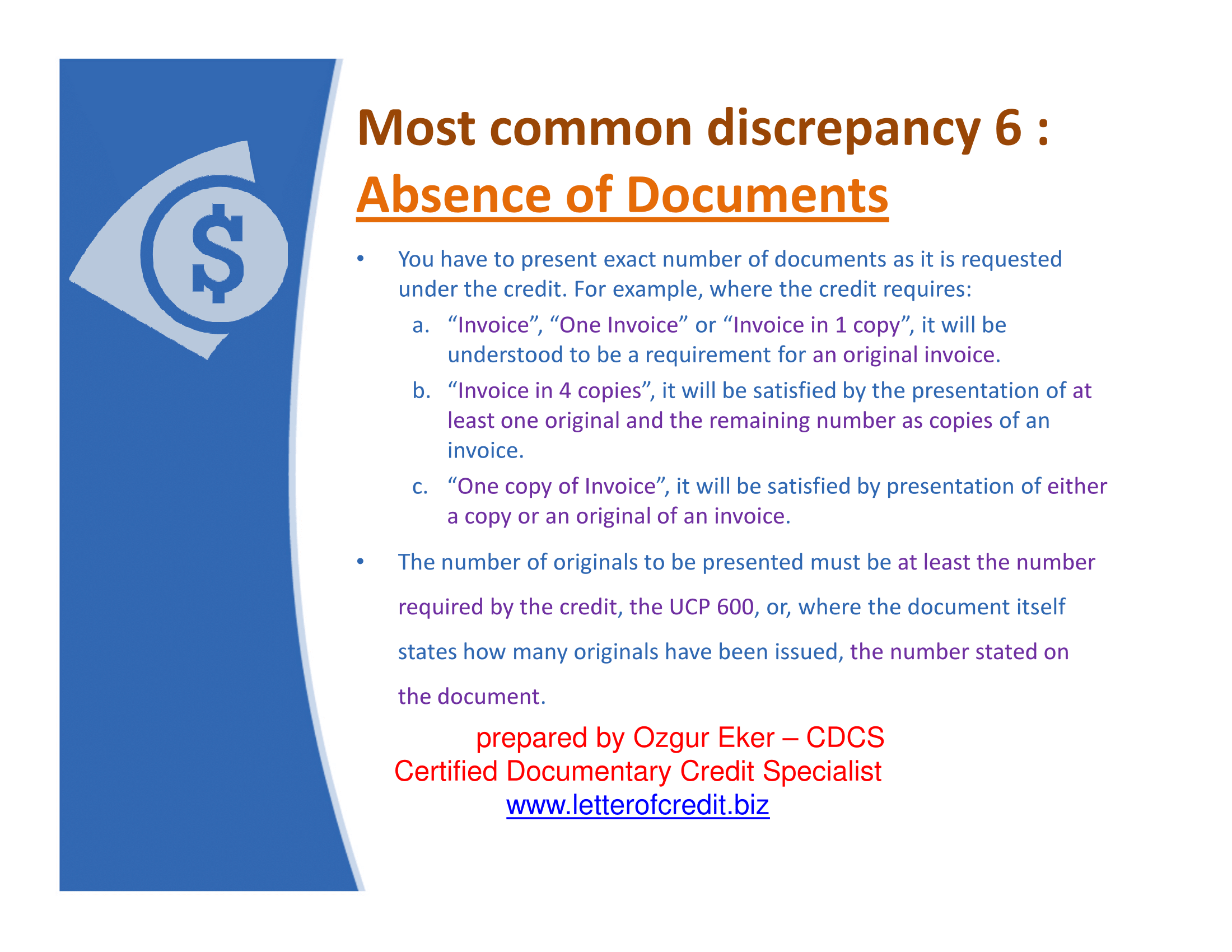 The exporter has to present exact number of documents as it is requested under the letter of credit. For example, if the credit requires:
The exporter has to present exact number of documents as it is requested under the letter of credit. For example, if the credit requires:
- a. “Invoice”, “One Invoice” or “Invoice in 1 copy”, it will be understood to be a requirement for an original invoice.
- b. “Invoice in 4 copies”, it will be satisfied by the presentation of at least one original and the remaining number as copies of an invoice.
- c.“One copy of Invoice”, it will be satisfied by presentation of either a copy or an original of an invoice.
Most Common Discrepancy 7: Carrier not defined on the bill of lading / bill of lading signed by Improper Authority
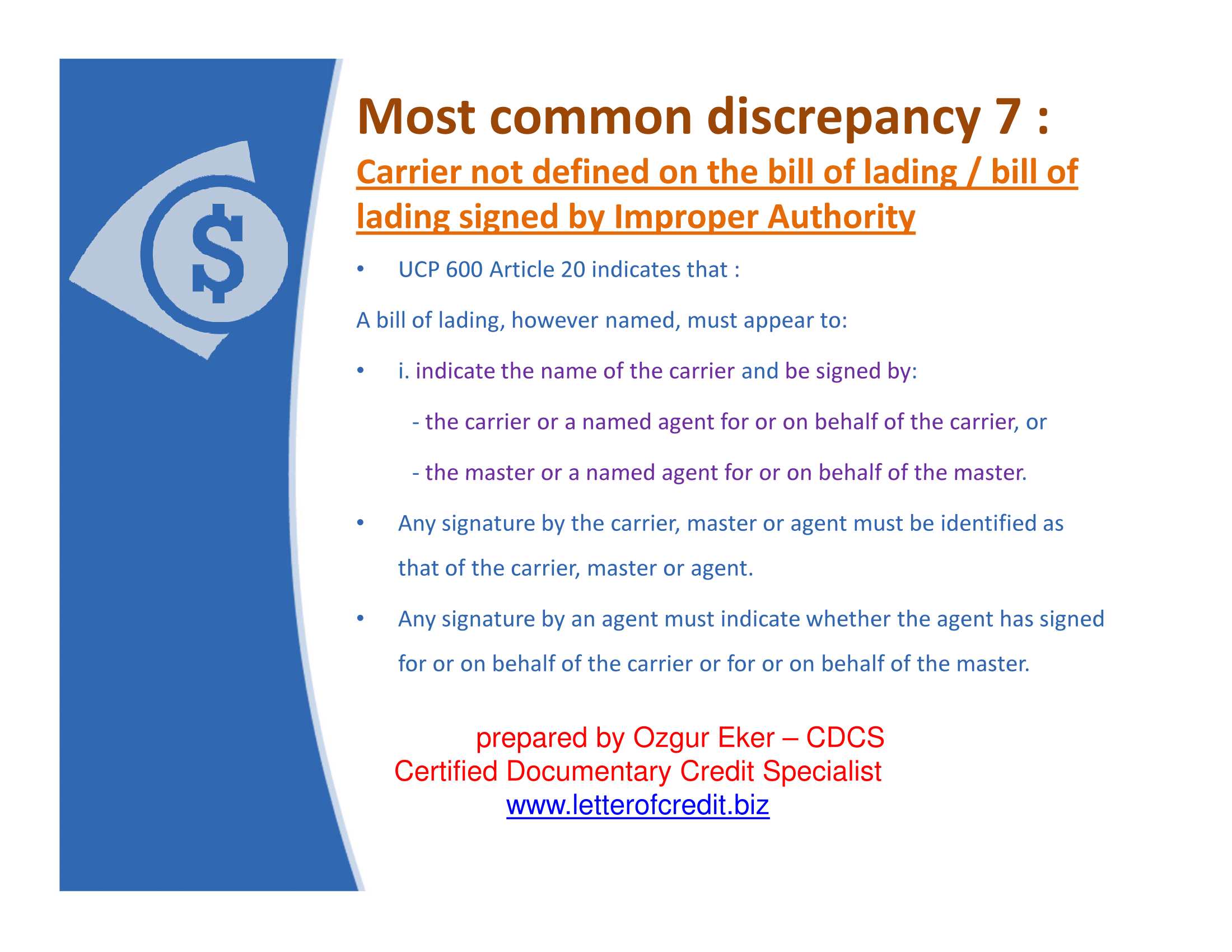
- UCP 600 Article 20 indicates that :
A bill of lading, however named, must appear to:
i. indicate the name of the carrier and be signed by:
– the carrier or a named agent for or on behalf of the carrier, or
– the master or a named agent for or on behalf of the master.
- Any signature by the carrier, master or agent must be identified as that of the carrier, master or agent.
- Any signature by an agent must indicate whether the agent has signed
for or on behalf of the carrier or for or on behalf of the master.
Most Common Discrepancy 8: Incorrect Description of Goods
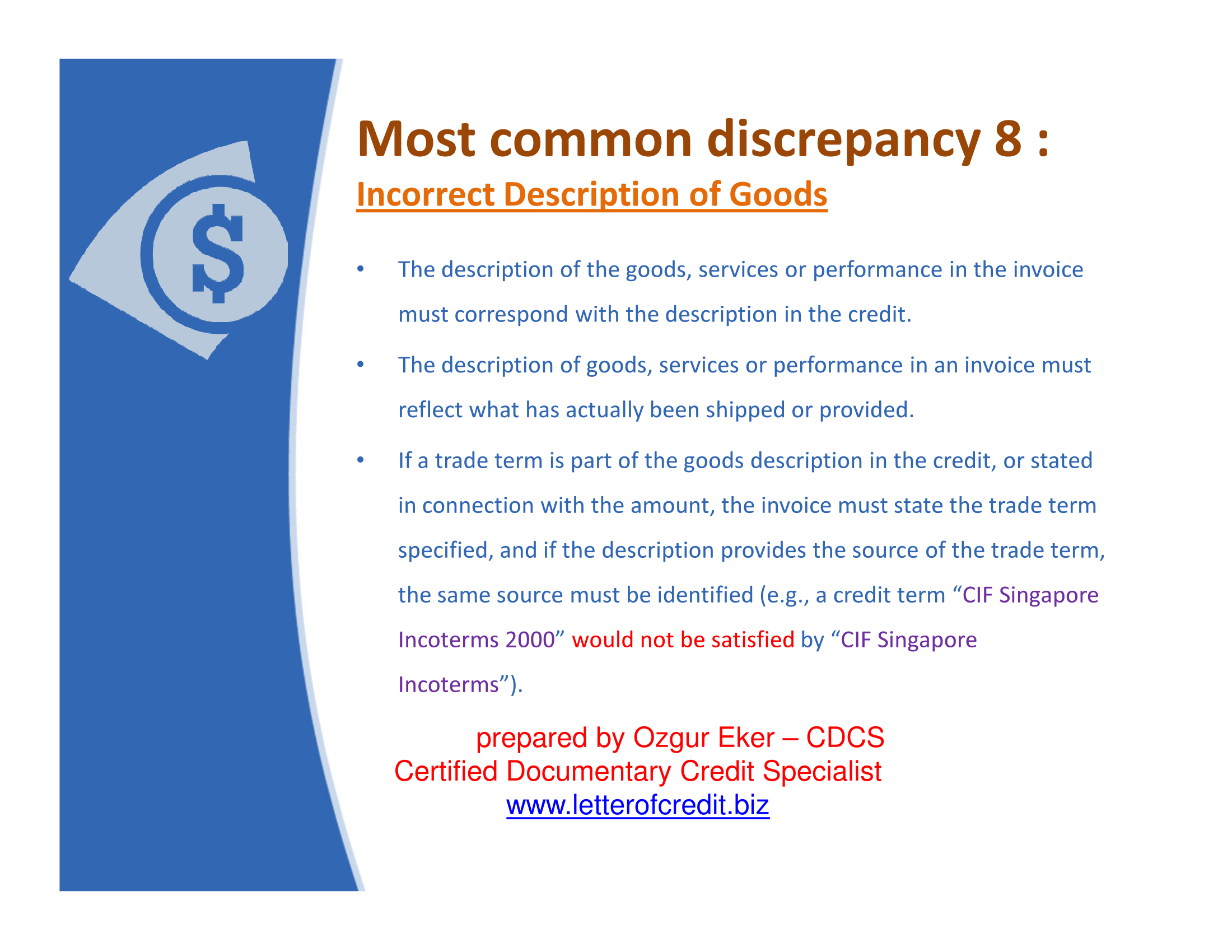 • The description of the goods, services or performance in the invoice must correspond with the description in the credit.
• The description of the goods, services or performance in the invoice must correspond with the description in the credit.
• The description of goods, services or performance in an invoice must reflect what has actually been shipped or provided.
• If a trade term is part of the goods description in the credit, or stated in connection with the amount, the invoice must state the trade term specified, and if the description provides the source of the trade term, the same source must be identified (e.g., a credit term “CIF Singapore Incoterms 2000” would not be satisfied by “CIF Singapore Incoterms”).
Most Common Discrepancy 9: Incorrect Endorsement / Absence of Endorsement
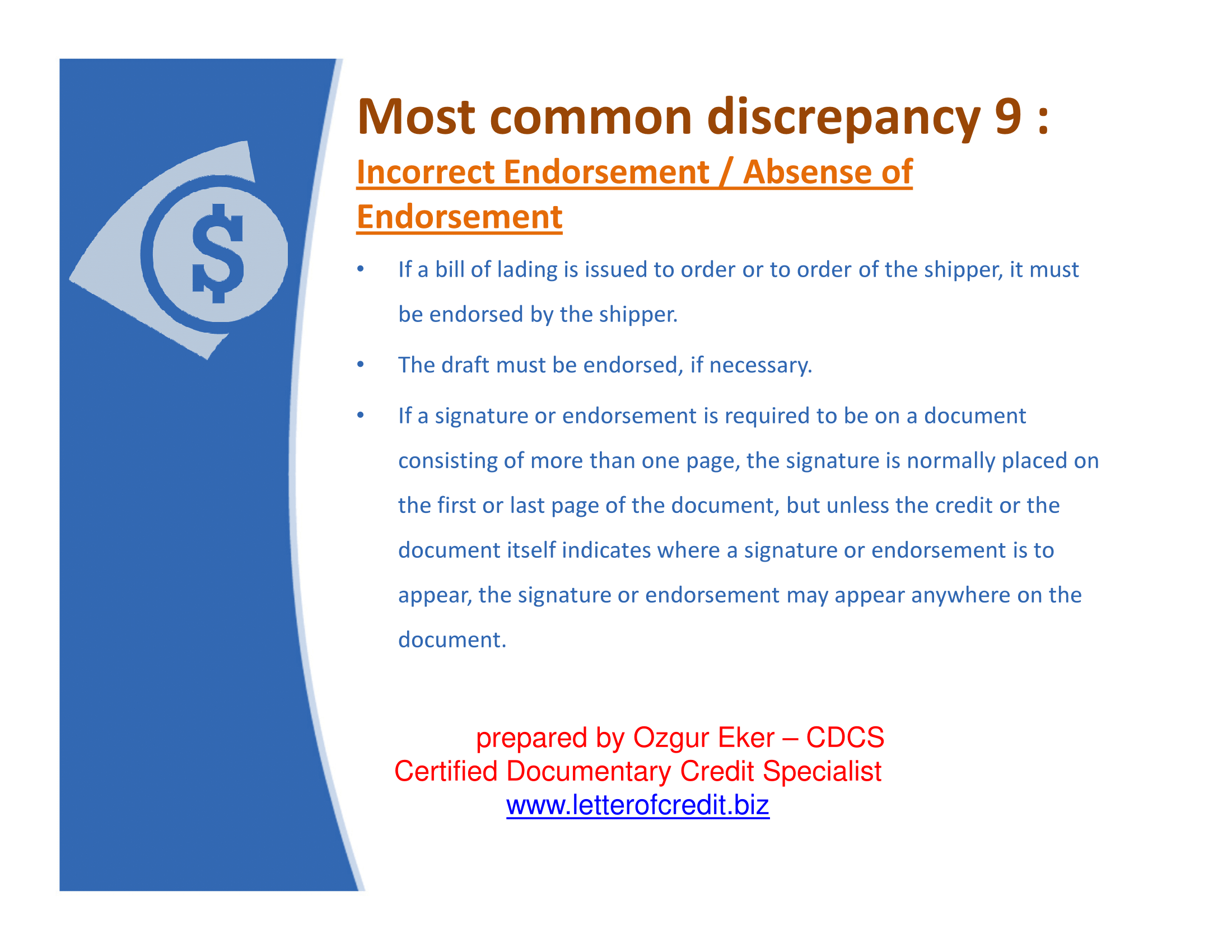
- If a bill of lading is issued to order or to order of the shipper, it must be endorsed by the shipper.
- The draft must be endorsed, if necessary.
- If a signature or endorsement is required to be on a document consisting of more than one page, the signature is normally placed on the first or last page of the document, but unless the credit or the document itself indicates where a signature or endorsement is to
appear, the signature or endorsement may appear anywhere on the document.
Most Common Discrepancy 10: Partial Shipment or Transshipment Effected Despite L/C Terms
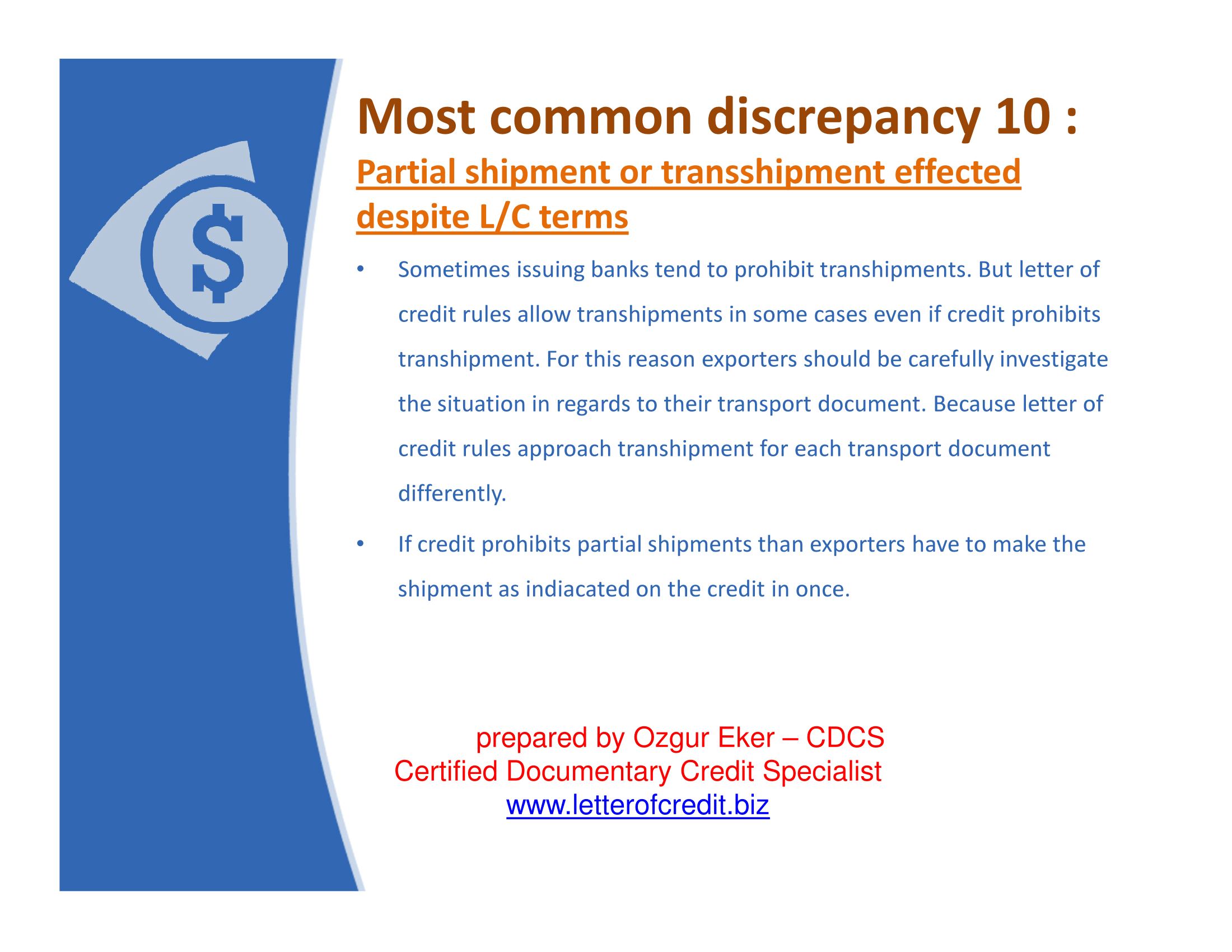
- Transhipment means unloading from one means of conveyance and reloading to another means of conveyance. (whether or not in different modes of transport)
- Partial shipment means shipment of goods not whole in one lot, but in more than one lots.
- If the letter of credit prohibits partial shipments and/or transhipment, the exporter must act accordingly.
- Please keep in mind that the letter of credit rules allow transhipments under certain circumstances even if the credit prohibits so.


